TWO SISTERS, TWO GREEN HOMES
Plus Recipes WAMPANOAG

MARTHA’S VINEYARD / FALL-WINTER 2022-2023
/ SMART / SUSTAINABLE / STORIES SIMPLE / SMART / SUSTAINABLE / STORIES
SIMPLE
Local Hero: High School Senior Annabelle Brothers · Great Local Holiday Gift Ideas TM SIMPLE / SMART / SUSTAINABLE / STORIES marthasvineyard. .com FALL-WINTER 2022-2023
OF FISH IN THE (VINEYARD) SEA
PLENTY
ENVIRONMENTAL WISDOM
WITH CURRIER in
Truck
CRUISING
Melinda Loberg's Rivian

ARCHITECTURE. ENGINEERING. BUILDING. INTERIORS. SOLAR. SOUTHMOUNTAIN.COM Sanct·u·ary
RED VALLEY ROAD, CHILMARK

Offering 3.6 acres of open, rolling land with classic Chilmark stonewalls and beach plum bushes, this charming four-bedroom home with a pool, sits on a ridge and offers views that reach as far as Noman’s, the Atlantic, Nashaquitsa, the Elizabeth Islands and Menemsha. The property includes a garage for vehicle and boat storage. Squibnocket Beach is around the corner and private access onto Zack’s Cliffs beach in Aquinnah is included as part of Blacksmith Valley Association as well as deeded access to Quitsa Pond and a small dock where kayaks and a sunfish can be stored. Buyers can enjoy the house as it is or make plans to expand, renovate or rebuild in this exceptional location. Boating, swimming, fishing, and bird watching are right outside your door. Exclusively offered for $6,100,000.




504 State Road, West Tisbury MA 02575 Beetlebung Corner, Chilmark MA 02535 www.tealaneassociates.com
An Independent Firm Specializing in Choice Properties for 50 Years
508.645.2628 Chilmark
508.696.9999 West Tisbury
ENJOY MORE TIME OUTSIDE!
MARTHA’S VINEYA RD
Look
Publisher and Co-Founder Victoria Riskin
Editors Leslie Garrett, Jamie Kageleiry editor@bluedotliving.com
Digital Projects Manager Kelsey Perrett
Associate Editor/Reporter Lily Olsen
Social Media/Digital Projects Julia Cooper
Contributing Editors Mollie Doyle, Catherine Walthers
Creative Director Tara Kenny
Design/Production Sophie Petkus
Proofreader Irene Ziebarth
Ad Sales Jenna Lambert adsales@mvtimes.com
Anne Kelley anne@bluedotliving.com
Digital Media Consultant Ray Pearce
Contributors, this issue Randi Baird, Geoff Currier, Mollie Doyle, Jeremy Driesen, Kate Feiffer, Sheny Leon, Gwyn McAllister, Sam Moore, Kyra Steck, Lisa Vanderhoop, Catherine Walthers
DEER, TICK & MOSQUITO CONTROL!
(508)627-2928 | MV@oh-DEER.com
oh-DEER.com/locations/MV

• SAFE FOR YOU, YOUR FAMILY & PETS!
• KILLS TICKS & MOSQUITOS ON CONTACT.
• AN EFFECTIVE ‘GREEN’ ALTERNATIVE TO PESTICIDES & CHEMICALS
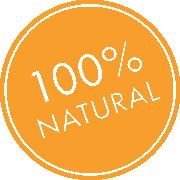
ohDEER offers you and your family a proven and safe solution to control ticks and mosquitoes so that you can enjoy your yard. Our products are true all-natural repellents that contain no pesticides or chemicals of any kind.

Bluedot, Inc. Co-Founders Walt and Nora McGraw
Bluedot and Bluedot Living logos and wordmarks are trademarks of Bluedot, Inc. Copyright © 2022. All rights reserved.
Bluedot Living: At Home on Earth is printed on recycled material, using soy-based ink, in the U.S.
Bluedot Living magazine, published quarterly, is distributed by The Martha’s Vineyard Times. Find it free at The MVTimes, newsstands, select retail locations, inns, and hotels.
Visit the digital version of this magazine at marthasvineyard.bluedotliving.com
See our new national website at bluedotliving.com
Sign up for our newsletters here: bluedotliving.com/newsletter Find Bluedot Living on Twitter, Instagram, and Facebook @bluedotliving
Subscribe: Please inquire at admin@bluedotliving.com

2 MARTHA’S VINEYARD /FALL-WINTER 2022-2023
BDL • OUR TEAM
• • • • • • ®
“
again at that dot. That’s here. That’s home. On it everyone you love .” –Carl Sagan
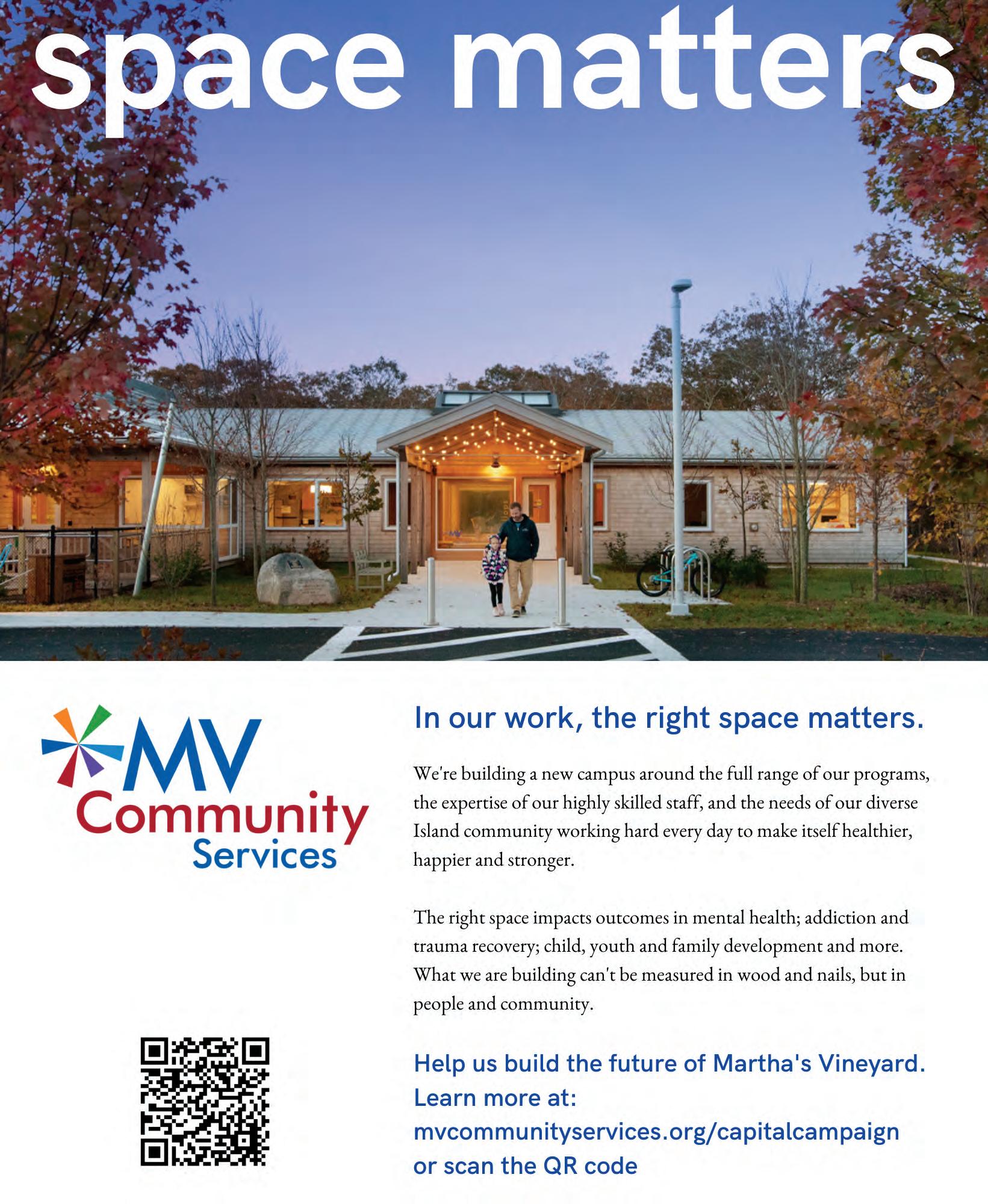
3 marthasvineyard. .com
Dear Bluedot Living Readers,
In the weeks before we went to press, young activists had thrown tomato soup on Van Gogh’s iconic Sunflowers (followed by a similar act involving mashed potatoes against a work by Monet). Social media lit up with takes ranging from accolades to outrage. Regardless of what side you’re on, let’s take particular note of the age of these activists — just a year or two removed from their teens.
For many years at my children’s elementary school, I facilitated an eco-committee. Students led our group, choosing projects to tackle based on problems they identified — too much lunch garbage, for instance. When I felt defeated at the lack of progress world leaders were making on climate issues, these kids never failed to get me back on my feet to help them fight for the world they deserved. After all, this was their future. They had a lot more to lose than I.
On page 64 of this issue, you’ll meet our Local Hero Annabelle Brothers — who’s part of our newly launched Bluedot Institute. From the first conception of Bluedot, founder Vicki Riskin knew that she wanted young people to be part of the work we’re doing. The Institute, a non-profit, has partnered with schools around the country, including Martha’s Vineyard Regional High School, where Annabelle is a student. Annabelle’s enthusiasm for the environmental projects she and her classmates are tackling underscores the Institute’s work to bring students and their teachers from across the country and around the world together to share solutions, learn from each other, cheer each other on, and report back to Bluedot readers.
Also in this issue, Kyra Steck, a former intern with Bluedot Living, shares how Indigenous people have been urging us to pay attention — to their traditional ecological knowledge but also to their current voices. “In order to really get people’s total and true buy-in, there needs to be an effort to ensure Native people will survive it as well,” Jonathan Perry, a tribal council member for the Wampanoag Tribe of Gay Head, told Kyra.
There are many ways that people who are historically dismissed — young people, Indigenous people — ask others to stand in solidarity with them, to help foster change. However we judge the soup-throwing activists’ approach, they are demanding that we pay attention. We owe them nothing less.
BLUEDOT UPDATE
Come on in to Bluedot Kitchen, a weekly newsletter that will serve up delicious, healthy, planet-friendly recipes, along with tips on savvy shopping, storing, and food prep. Sign up now, and look for it this winter. Sign up for any of our newsletters here: Bluedotliving.com/newsletter

We also want to welcome another new member of the Bluedot family. Bluedot Brooklyn will share local news about green goings-on plus eco-conscious businesses, advice, recipes, and all you’ve come to expect from Bluedot Living. The website and a biweekly newsletter launch in early December; find it at brooklyn.bluedotliving.com

Watch us on YouTube! We've got a growing library of cooking videos and "how-to's" from Mr. Fix-it, who will help you get more life out of your stuff.

And finally, The Bluedot Institute will host dispatches from our cub reporters at high schools all over the country by year’s end at bluedotinstitute.org.
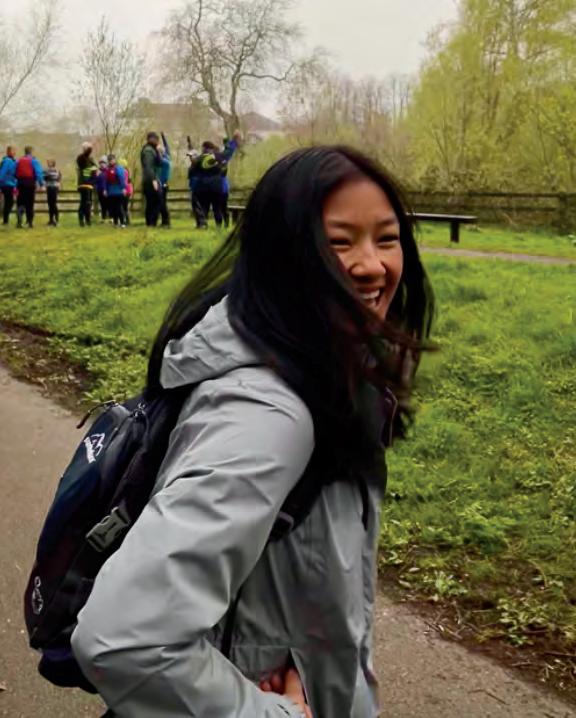
Thanks for tuning in!
–Leslie Garrett (and Jamie Kageleiry)
4 MARTHA’S VINEYARD /FALL-WINTER 2022-2023 EDITORS' LETTER 4
Annabelle Brothers and Cleo Carney (below) are members of our new Bluedot Institute.
The Hub, a Bluedot Living newsletter gathers good news, good food, and good tips on living every day more sustainably Delivered straight to your inbox bi-weekly.
Simple, Smart, Sustainable Stories — from all over.
ADVICE
Questions and answers for everyday eco-friendly living.


DISPATCHES
On-the-ground reporting highlighting a universe of ideas and changemakers.
MARKETPLACE
Strive to buy less, but when you do buy — buy better.
FOOD
Clean-cooking recipes and sustainable tips and tricks for buying and storing food.

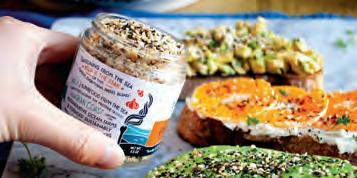

SIGN UP HERE
Sign up for The Hub newsletter for a chance to be our next big winner!

bluedotliving.com/newsletter

DISCOVER
Meet Bruce Nevin of Edgartown, dining with his family at Atria. Bruce won our last $200 drawing.
CONTENTS Upfront
4 Editors' Letter
8 What.On.Earth. The sound (and stats) of silence.
9 Good News from MV and All Over
10 Buy Local at The Seven Sisters: Nearly every item selected by Ty Sinnett in her Vineyard Haven store has a story.
12 Buy Better: Gorgeous gifts from the Vineyard
16 In a Word: Psychogeology
16 Field Notes: Give Better — Nonprofits that make our Island (and our planet) better.
Features
26 Rachel Carson in Woods Hole
By Kelsey Perrett
Before Silent Spring, the author was enchanted by the sea of Vineyard Sound.

28 How to Live on Mother Earth
By Kyra Steck
Generations of Wampanoag wisdom can help us care for our land (if we are ready to listen).
34 What’s So Bad About Private Jets?
By Sam Moore
Sure, they only account for about 5% of aviation emissions. But that’s more than some small countries.
38 Two Sisters Build Green
By
Mollie Doyle
One tackled a historic remodel while the other built new. But both prioritized sustainable materials and energy-efficiency.
50 Food: All the Fish in the Sea
By Catherine Walthers
The ocean’s bounty has limits, and some once-plentiful species are in decline. But there are lots of local fish available seasonally and year-round that Island fishermen are keen to put on our plates. Plus recipes!
Department
Departments
18 Dear Dot Our eco-advice columnist responds: Avoiding the creep of plastic-packed everything, and what’s a celebration without balloons?
22 Cruising with Currier
Our intrepid reporter takes a ride down “the dragon’s back” with an old friend in a brand-new Rivian
58 Room for Change: Rugs
By Mollie Doyle
A well-chosen area rug can elevate your whole room. Mollie Doyle guides us through the most sustainable solutions.
63 The 'Keep This' Handbook
Your eco-guide to composting, recycling, volunteering, activism, and more.
64 Local Heroes: We nominate Annabelle Brothers — an eco-wise teen intent on changing the world.
More
at marthasvineyard.bluedotliving.com and Bluedotliving.com
How to Get Rid of (Almost) Anything
The Bluedot Buy Better Marketplace

A Field Note from Felix Neck
Lots More ‘Dear Dots’
6 MARTHA’S VINEYARD /FALL-WINTER 2022-2023
Find Us! Sign up for our biweekly Martha's Vineyard Bluedot newsletter: bit.ly/Bluedot-newsletter
online
More
online
PHOTO THIS PAGE: THE LIBRARY OF CONGRESS
Cover photo; Denny Jason, Jr., in Menemsha, by Sheny Leon


























BDL 7 marthasvineyard. .com www.mvbuyeragents.com 508-627-5177 Email: buymv@mvbuyeragents.com 13 Coffins Field Road Edgartown, MA 02539-1661 “And, when you want something, all the universe conspires in helping you to achieve it.” — Paulo Coelho, The Alchemist green contractors of martha’s vineyard 508.696.3120 • nmdgreen.com • INFO@nmdgreen.com Plumbing • Heating • Air Conditioning Water Treatment • Maintenance Programs INSTALlATION & SERVICE GREeN SERVICE Geo Thermal • Solar Hot Water • Heat Pumps Energy Management • Design & Consultation Digital Control Systems
What. On. Earth.
Silent Treatment
“In the last light of a long day, I sit on a chair on my porch and watch the sky drain colors down and out and I realize I want to hear my voice and only mine. Not the voice of my voice within a cacophony of old pains. Just mine, now.”

–Jenny Slate, from the book Little Weirds
1. Where noise ranked by the European Environmental Agency on list of environmental exposure most harmful to public health: 2nd
2. Estimated number of new cases of heart disease each year in Europe attributed to chronic noise exposure: 48,000
3. Increased decibels in median nighttime noise pollution levels (commonly includes industrial activity, traffic, and airports) in neighborhoods with at least 75 percent Black residents versus neighborhoods with no Black residents: 4
4. Year underwater sonar was introduced: 1950
5. Total number of mass strandings of beaked whales between 1874 and 1950: 10
6. Total number of mass strandings of beaked whales between 1950 and 2004: 126
7. Percentage of continental U.S. in which one could find “quiet” in 1900: 75%
8. Percentage of continental U.S. in which one could find "quiet" in 2010: 2%
9. Decibel level at which continued exposure to noise will cause hearing loss: 70
10. Decibel level of rainfall: 50
11. Decibel level of leaf blower: 110
12. Decibel level of fireworks at 3 feet: 162
13. Reduction in seismic noise during the pandemic year of 2020, the longest and most prominent global anthropogenic seismic noise reduction on record: ~50
8 MARTHA’S VINEYARD /FALL-WINTER 2022-2023
1 and 2. Harvard Magazine; 3, Berkeley News; 4, 5 and 6. Newsweek; 7 and 8. BBC; 9, 10, 11, and 12.
13.
Noiseawareness.org;
Science.
PHOTO BY BOB AVAKIAN; see his work year-round at the Granary Gallery, and at bobavakianphotography.com
The Sky's the Limit for Black Skimmers
Black skimmers have increased in number and show signs of a more established population on the Vineyard in the future after a rocky start, BiodiversityWorks reports. The birds began nesting on-Island in 2010 at Norton Point beach in Edgartown, but no chicks survived to maturity that year. In 2011, when the persistent species tried their luck again, a hunting raptor forced them to abandon their nests. Finally, in 2012, four pairs of skimmers fledged chicks. At first, the skimmer population on Martha’s Vineyard grew slowly each year. But from 2018 to 2022, growth skyrocketed from 12 pairs to 22.
A Plus for Piping Plover Population
Martha’s Vineyard’s black skimmers aren’t the only winged creatures that enjoyed a productive year in Massachusetts. The piping plover, a species categorized as threatened and protected by state and federal law, has continued its decade of growth, with almost a thousand pairs nesting on the Massachusetts coastline this year, according to findings from the Massachusetts Division of Fisheries and Wildlife.
The state’s piping plover populations have long been threatened by human activity, predators such as seagulls, and storms.
Ocean Breeze Bedding






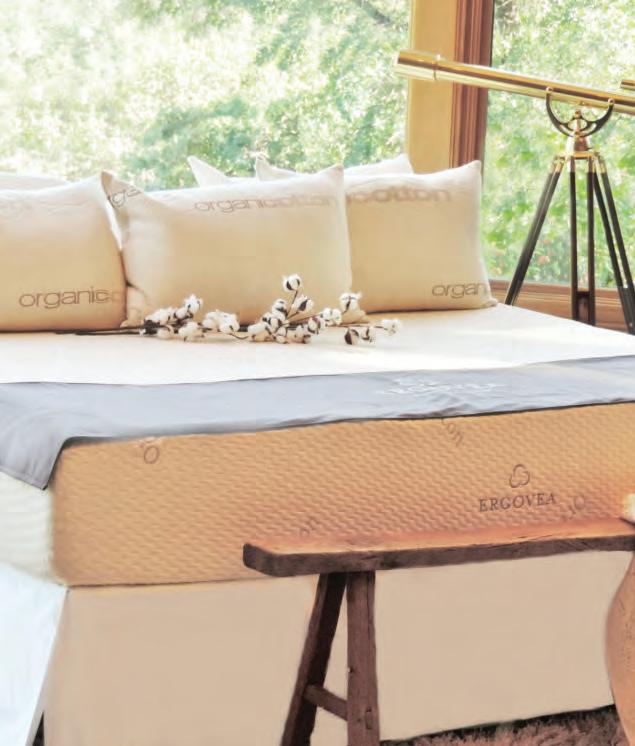
But, a number of conservation efforts across the Massachusetts coastline have helped those numbers steadily grow. These projects involve monitoring nests and sectioning off plover habitats on the beach to protect them from humans and animals stepping on them.
Restoring Wampanoag Land
Wampanoag volunteers are restoring Massachusetts lands. As reported by The Associated Press and MassLive, a project called The Wampanoag Common Lands aims at restoring 32-acres of what used to be a Catholic summer camp along Muddy Pond in Kingston. The Native Land Conservancy received the donated land this year. The group hopes to restore the land with indigenous plants and animals, hold cultural ceremonies, and provide education for new generations about Wampanoag traditions.
The project location is historically significant — five miles from where the Mayflower touched ground and sparked English and later American colonization of native lands. Restoration projects such as this are especially important given the effects of climate change, which are threatening many tribes’ health and ways of life.
UPFRONT • GOOD NEWS 9 marthasvineyard. .com
good news
FROM ALL OVER
The Island’s source for organic mattresses, pillows, and bed linens. Ergovea is our organic and natural latex mattress brand, providing the purest night’s sleep; Ergovea’s pillows are paradise. Sleep and Beyond provides toppers, sheets, pillows, comforters and more of your bedding needs. 322 State Road, VH · 508-696-9600 oceanbreezemvbedding.net Get the purest night’s sleep Come see our collection of organic sheets
THE SEVEN SISTERS:
Ty Sinnett’s new store has a big mission.
By Mollie Doyle Photos Sheny Leon
When Ty Sinnett greets me with her dog, Leo (a rescue from Bali), at her new store, The Seven Sisters in Vineyard Haven, it feels more like we are walking into her home than a shop. Maybe it’s the abundance of beautiful pillows fashioned out of hand loomed wedding fabric from Bali. Maybe it’s the draped Lineage Botanica blankets, crafted with gorgeous heavy linen vintage textiles backed with organic cotton. Maybe it’s the ease of the store’s apothecary, which has shelves full of wonderfully designed, enticing beauty potions. But as I begin to talk with Ty, we figure it out: She has personal relationships and a story to go with nearly everything in her store.
Ty met jeweler Loan Faven of Naula Studio while she was living in Bali. She tells me that Loan is from New Caledonia, the French colony off the coast of Australia, and uses her ancestral history as inspiration for her pieces. There’s Jeanette
Farrier, who works with a women’s co-op in India to source vintage cotton saris for her luminous layered blankets. And then there are the rugs made with wool from Bulgarian Karakachan sheep. “The Soviets tried to exterminate the breed as part of their nationalization effort,” Ty explains. “There are only 400 left. About 30 shepherds keep them alive. They are treated like royalty. These rugs are made by hand. They are extraordinary.” Her dog Leo clearly agrees as he curls up on one.
“Some people might ask, ‘Why do you carry Le Jacquard Francais in with all of this other stuff?’ Well, my mother carried it. They use vegetable dyes and, while one set of napkins might cost more, I also know they will last for 30 years.”
Ty’s mother is Emily Bramhall, who owned Bramhall and Dunn, Vineyard Haven’s Main Street mainstay for homegoods for 30 years. Ty grew up on the Island, working in her mother’s shop. Her father Steven Sinett was one of the early members of the South Mountain team. Ty attended Bard and then the





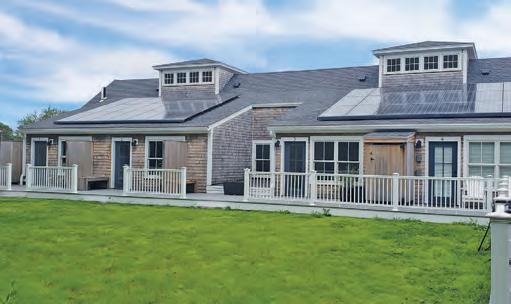
LOCAL • UPFRONT 10 MARTHA’S VINEYARD /FALL-WINTER 2022-2023
JOY ON VINEYARD
HAVEN’S MAIN STREET
Your Renewable Energy Solution Solar, plus smart, safe and long-lasting battery technology. Power your home with clean energy around the clock with solar and batteries. www.fullers.energy 508.696.3006 info@fullersenergy.com BLUEVIEW GUTTERS Seamless Aluminum, Copper, Fiberglass, Wood Installation, Repairs, Seasonal & Yearly Cleaning Joseph Cogliano 774-563-0938 FREE ESTIMATES CALL
School of Fashion Design in Boston. As she tells it, she has always been interested in design, but the definition has expanded. “My mission is to inspire people to have a more intimate, enjoyable relationship with things through curiosity, storytelling, and sensory delight.” She laughs, noting that she knows her mission is big. “But I want people to come in here and feel joy,” she says. “I don’t buy into this idea of the sacrificial narrative. That to support the Earth or be a good person, you must always be giving and/or depriving yourself. This is a sustainable commerce model. This means we want to nourish the lives of our clients, our supply chain, and the planet. And there’s no pressure to buy. Just come in here and, if something really connects, feels right, then get it. And you will have it, along with its particular story, for a really long time.”
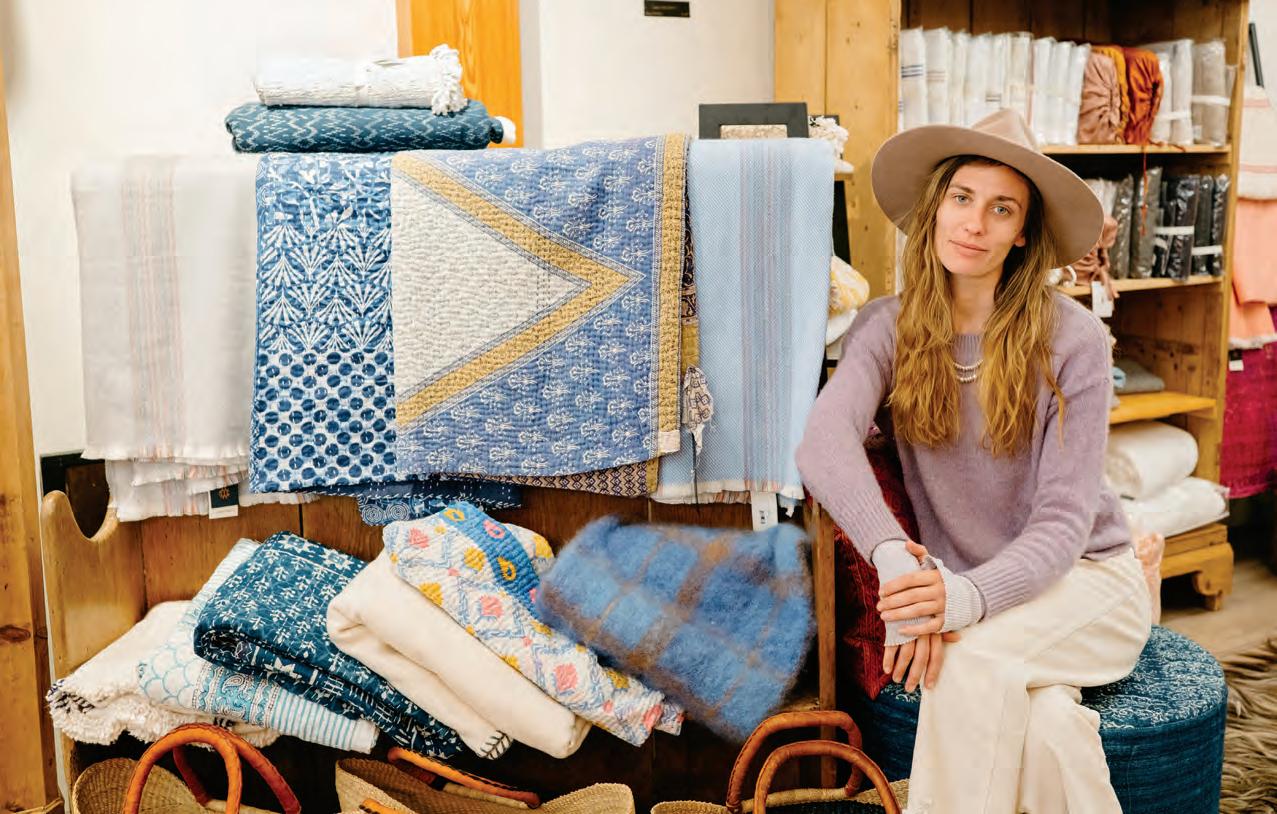
In Greek mythology, the Pleiades were the seven daughters of the Titan Atlas. Because he had the unenviable task of holding up the sky for eternity, he was unable to protect his daughters from

LOCAL
being raped by Orion or turned into stars by Zeus. In the myth, six were turned into stars, while one marries a mortal and that is why we cannot see her in the sky. Ty chose to name her store after these seven sisters because similar stories have been told by Aboriginal, African, Asian, Indonesian, and Native American cultures. What about the Pleiades makes people — across space, time, and culture — look up at the sky and see this same story? We don’t know. But what we do know after spending time in The Seven Sisters store is how aptly it’s named, because no matter where the goods are from, there is a universal theme to Ty’s offerings: Like the myth, they can be traced to a source and tell a story. On thesevensisters.co, Ty sums up her store’s philosophy, “We believe that when consumers have a more connected, intimate relationship with the products we consume and the people who make them, we all feel better.”
Seven Sisters will be open through December, then back in the spring.
11 marthasvineyard. .com
Buy Better Find your gifts locally
MADE ON
MARTHA'S VINEYARD
By Gwyn McAllister Photos Courtesy of the Artists
With a keen eye for color, Wolf pairs the beads in coordinating shades that mimic the blues and greens of the ocean, or in rainbow combinations that spotlight the uniqueness of each colorful bead. Many of the necklace styles feature multiple strands of beads in which the flattened mini tiles hang gracefully and show off the beauty of each individual bead.
The Stefanie Wolf studio offers numerous lines of the jeweler’s creations, along with other artisan-made products, including ceramics, bags, candles, clothing, and more.
Stefanie Wolf Designs, 37 Circuit Ave., Oak Bluffs.
Althea Designs
Artist Althea Freeman-Miller, born and raised on the Island, creates designs on linoleum blocks which she then transfers to prints mounted on wood, tee shirts, tote bags, coffee mugs, and cards. The expertly carved intricate designs are lively, often whimsical representations of animals and fruit, as well as tools and ordinary household items like a colander or a flashlight. Some designs are more elaborate and multicolored, such as a western-themed scene with horse and rider, or a trio of fish leaping in the waves.

Stefanie Wolf
If you have a jewelry lover on your gift giving list (and who doesn’t?) you should really check out the Stefanie Wolf studio and boutique on Circuit Ave. in Oak Bluffs. Wolf has been creating unique beaded necklaces, earrings, and bracelets on the Island for almost 20 years and is continually adding items to her inventory.
Stefanie’s most popular line, Trilogy, features tiny, richly colored glass tiles made in the Czech Republic. Each bead is a work of art. The rounded rectangular tiles have hand-painted edges — similar to the look of stained-glass panes — that inspired their name “Picasso windows.”

BUY BETTER/MADE ON MARTHA'S VINEYARD • UPFRONT 12 MARTHA’S VINEYARD /FALL-WINTER 2022-2023
More recent designs include a series of dancers and an anatomical heart that beautifully shows off the intricacy of that organ.
Given the nature of the process, each print is unique and the designs come in a variety of colors. Freeman-Miller also creates colorful, hand-painted, laser-print engraved wood cutouts and layered carved paintings. She also offers custom-designed linoleum block prints.
Althea Designs is located at 34 Beach Road, Vineyard Haven. Open by chance or by appointment. (802) 777-5137.
influence,” she says. However, her early years growing up on the Island were what really instilled a reverence for nature in the first place. “I’ve always loved just walking around the Island,” she says. “My dad knows pretty much every plant here. He would teach me about everything.”
Available at The Trust Shop, 9 Main Street, Vineyard Haven and Kenworthy, 38 Winter Street, Edgartown.
Island Alpaca
You may have seen Barbara Ronchetti’s herd roaming the fields at Island Alpaca off the Vineyard Haven-Edgartown Road. The animals — 35 or so — brave the winter weather owing to the unique properties of their coats. If you want to keep warm and cozy this winter, take advantage of that extra warm fleece yourself — without having to curl up with an alpaca.
The farm’s gift shop offers all types of items made from alpaca fiber, including a number of garments made by local knitters. You can find hats, scarves, gloves, mittens, baby jackets, and booties made from the fiber of the farm’s softest residents — baby alpacas.

Ronchetti explains the advantages of alpaca fiber over wool (the fleece of sheep or goats): “Because alpaca fiber is hollow cored, it acts as an effective insulator and is known to be 30 per-
Tea Lane Apothecary
Tea Lane Apothecary — a line of herbal skincare, teas, and remedies — is about as local as you can get. Emma Tobin, who grew up on the Vineyard and went on to study botany and herbalism, uses many Vineyard-grown plants to create her all natural products.

Tea Lane Apothecary products include aids for everyday needs like sleep, focus, immunity, stress, anxiety, tick/bug repellent, hair and skin care, and more. All of the herb-infused oils, salves, tinctures, syrups, and glycerites are produced on Island using foraged native plants and herbs grown in Tobin’s garden whenever possible.
“Many of the herbs used in homeopathic medicine grow just about everywhere,” says Tobin, who calls her foraging expeditions “wildcrafting.” “ It’s really amazing how abundant they are and how people think of them as weeds.”
Tobin’s family owns and operates Tea Lane Nursery and Farms. She studied plant sciences at UMass Amherst and The California School of Herbal Studies — a natural for someone whose early life was immersed in nature and plants. As well as working as farmer, gardener, and landscaper, she also worked at her cousin’s organic farm in Vermont, which inspired her to dig deeper into the plant world. “That was probably my biggest
UPFRONT • BUY BETTER/MADE ON MARTHA'S VINEYARD 13 marthasvineyard. .com
cent warmer than most breeds of sheep. It helps keep you warm in winter and cool in summer. It also naturally wicks and draws moisture away from the body and allows it to evaporate quickly, so you stay dry and comfortable.”
Alpaca fiber is durable, stain resistant, and hypoallergenic, making it a good choice for those sensitive to wool. The Island Alpaca herd includes animals in a variety of colors so the knitted products can be found in various shades of cream, gray, beige, and brown. Along with locally made items, the gift shop features many products made from alpaca fiber from around the world. And if you’re really adventurous, inquire about purchasing a member of the herd for yourself.
Island
Alpaca, 1 Head of the Pond Road, Vineyard Haven
Miles from Mainland
Show your love for the Vineyard with a handmade wood item from the Miles from Mainland line. Designs include ornaments with a cutout of the Vineyard, tissue boxes, trinket boxes, and pencil boxes similarly decorated.
Carnegie Blair Designs
The team of Linda Carnegie and Nancy Blair Vietor have been designing and selling items for kitchen, dining, bath, and elsewhere for almost a decade. Vietor, an artist and decorative painter and Blair, an interior designer, combined their talents in 2013, starting out with a series of placemats in colorful, often Vineyard-inspired themes. The business took off from there.
The line includes cork-backed placemats, wooden whitewashed trays, glass cutting boards, absorbent tile coasters, and a few other items (including whimsical dog and cat food mats).

Designs include floral motifs and ocean-themed images like lobsters, crabs, starfish, shells, and fish, a compass rose, and an image of the ferry “The Islander” surrounded by scenes of lighthouses from around the Island.
Ornamental designs include ones based on oriental carpets, sisal rugs, and Delft tiles. A unique design called “Jazzy Coral” features a colorful array of seaweed and coral
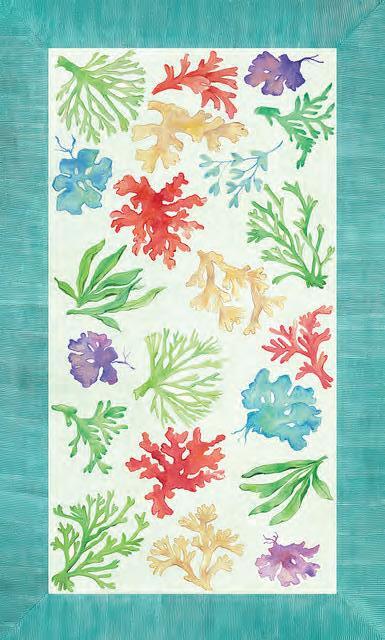
branches, while one of the Delft tile designs incorporates scenes from around the Island (the Ocean Park bandstand, an oyster fisherman) alternating with traditional Dutch images in classic blue and white.
All of the products are made in the U.S. Carnegie did a great deal of research to find manufacturers in this country. The two partners are continually expanding the line to include new designs and products.
“The painter in me likes to experiment,” Carnegie says. “The designer in me is always seeking new ideas for attractive yet functional products.”
Available at Beach House, 30 Main Street, Vineyard Haven and Past & Presents, 37 Main Street, Edgartown.
BUY BETTER/MADE ON MARTHA'S VINEYARD • UPFRONT 14 MARTHA’S VINEYARD /FALL-WINTER 2022-2023
Available at Rainy Day, 66 Main Street, Vineyard Haven.
Leather Treasures

Marie Meyer-Barton handcrafts leather goods from her original designs in her home workshop on Martha’s Vineyard. She uses buttery soft, locally sourced deerskin and other fine leather to create baby moccasins, purses, pouches, dopp kits, backpacks, wallets, belts, and leather jewelry. Meyer-Barton’s designs come in many colors and some of the items incorporate intricate designs imprinted in color on the leather. Others incorporate Native American-made wampum beads and buttons.
Available at Night Heron Gallery, 58 Main Street, Vineyard Haven, and Martha's Vineyard Made, 29 Main Street, Vineyard Haven.





UPFRONT • BUY BETTER/MADE ON MARTHA'S VINEYARD 15 marthasvineyard. .com
Native plant specialists and environmentally focused organic garden practices. Design • Installation • Maintenance (508) 645-9306 www.vineyardgardenangels.com Garden Angels Bring beauty to your property
Icannot offer you a dictionary definition of psychogeology because the word is not in the dictionary. What I can do is tell you that the author who coined the term, Kim Stanley Robinson, wanted a word to define how we are shaped by the places where we live or have spent time. Psycho, as a prefix, refers to relating to the mind or the soul. Geology, broadly, means the substance of the earth.
in a word
Psychogeology


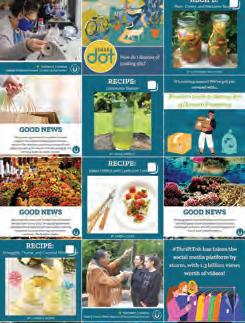
experience was so transformative for Powers that he found himself still thinking about it a year later.
“If you’re still preoccupied with a place and how you felt in that place after such a long period of time after only a fourday exposure,” Powers said, “that’s got to tell you something.”
Robinson chose to use the term “geology” and refers specifically to mountains. The Sierra mountains (the focus of his most recent book, The High Sierra, a Love Story) make him feel differently than Swiss mountains, he says, inviting us, too, to notice how different places make us feel.
“I think the mountains are a space where you are taken outside of your ordinary urban mind and are thinking a


little deeper — or, no, that might not be the right way to put it,” he said during an interview on The Ezra Klein Show. “Things are coming together in your head in a different way.”


Richard Powers, author of Bewilderment and The Overstory, described his first foray into the Smoky Mountains to Ezra Klein in a separate interview. The

Watch dolphins at play on Malibu Beach

There is a particularity to psychogeology, according to Kim Stanley Robinson: “I talk about psychogeology as the trying to understand why, for instance, the Sierras feel so different than the Swiss Alps or the trans-Antarctics or the Himalayas.” It is the character of these places, he posits to Klein, that coalesce into a particular feeling. … You can try to explain it, but it’s more of a gestalt. And that’s psychogeology.”
 –Leslie Garrett
–Leslie Garrett
IN A WORD 16 MARTHA’S VINEYARD /FALL-WINTER 2022-2023
Psycho [sahy-koh ] geology [jee-ol-uh-jee]
Closest-in private waterfront home just 6 miles from Santa Monica. 3 bedrooms and 3 bathrooms, top of the line amenities, Japanese garden, 1 - 3 month min. Call Realtor Steve Drust at 310.733.7487. Visit beautyandthebeachmalibu.com to see more of what this pristine property has to offer. And get out of the cold!
villa
Romantic beachfront vacation
Email us at adsales@mvtimes.com to inquire about sponsored business posts Reliable information and advice on #ClimateChange and #Sustainability Let's start here, at home on earth. Scan below to become a follower
"THE WALK HOME" BY JACK YUEN
Featuring brands: Rareform, Rothy’s, Reformation, Cariuma, Cotopaxi, Ecozoi, Eileen Fisher, Hydros, Dropps, Amour Vert, VEJA, TenTree, Terra Thread, Teeccino, Toad & Co., and Who Gives a Crap (among others)
Featuring brands: Rareform, Rothy’s, Reformation, Cariuma, Cotopaxi, Ecozoi, Eileen Fisher, Hydros, Dropps, Amour Vert, VEJA, TenTree, Terra Thread, Teeccino, Toad & Co., and Who Gives a Crap (among others)
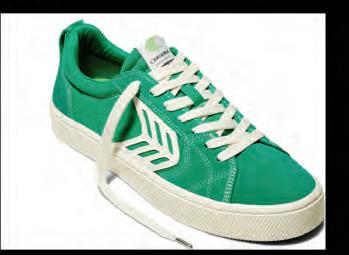



















IN A WORD marthasvineyard. .com bluedotliving.com/marketplace Br wse the collection Buy less, but when you do — buy better. Shop Bluedot’s ‘Buy Better’ Marketplace
Want an Eco-Friendly Holiday? bluedotliving.com/marketplace Browse the collection Buy less, but when you do — buy better. Shop Bluedot’s ‘Buy Better’ Marketplace
Want an Eco-Friendly Holiday?
Dot tackles your thorniest questions from her perch on a porch: Is it a party without balloons? And how can I eliminate plastic?


Dear Dot,
How can I celebrate an event without balloons?
–Cathy, Chilmark, Mass.
dot DEAR
traffic accidents, and injuring two prize-winning horses who were spooked by the arrival of balloons in their pasture. (The litigious farmer won a $100,000 settlement from the city.) Ultimately, the powers-that-be at the Guinness Book of World Records refused to recognize the event due to the fallout. The moral of the story? What goes up must come down.
Dear Cathy,
One day in third grade, my teacher Mrs. Wright showed us a movie in which a young child encounters a balloon that seems to have a mind of its own. Perhaps, Cathy, you saw it too? It was French, silent, and called Le Ballon Rouge. Wikipedia tells me it was an Oscar-winning short created in 1956 that became beloved by educators, which explains why I was at my desk in 1974 watching it while Mrs. Wright, her candy floss hair piled high on her head, nodded off at the back of the classroom. While my classmates giggled at the balloon’s antics, I sat mute and terrified. To this day, I remain staunchly anti-balloon, even of balloons without free will.
While some might argue that balloons are the very symbol of celebration, I am not swayed. So I am grateful for the chance to address this scourge and offer up some jolly alternatives.
If you’re a beachcomber like me or, perhaps someone who hikes along a river or stream, you’ve likely come across evidence of past frivolity in the form of deflated balloons, their ribbons filthy and tangled. What you’re not seeing unless you, too, have come across the Balloons Blow website, are the many balloon bits found in the stomach of, say, a Hawksbill sea turtle or a Bighorn sheep, each of whom mistook balloons for food.
We find another cautionary tale in the Great Cleveland Balloon Release Disaster of 1986. Cleveland wanted to get into the Guiness Book of World Records (and not for being the city most likely to set its river on fire). The record the city had its eyes on was largest balloon release in the world, with roughly 1.5 million balloons slated for the heavens. I mean … what could go wrong, right? At the balloons’ release, the crowd went wild. But shortly after the release, a storm rolled in off the Great Lakes, changing air pressure. Instead of floating away into the arms of God, the balloons fell on Cleveland, closing the airport, causing
But, while balloons might now be spherus non grata in Cleveland, the lesson hasn’t caught on in the rest of the world, despite laws that prohibit balloons in many cities, states, and countries. Incidentally, the balloon lobby (Big Balloon, so to speak) is fighting these laws.
The folks at Balloons Blow — and a hearty Dear Dot shoutout to whomever named that organization! — tell us that beach litter surveys show a tripling in balloon pollution, an increase not the least bit surprising to any of us who pick up litter along the shore and head home laden with latex. The Balloons Blow site is a virtual natural history museum of marine and land animals who’ve met gruesome deaths by swallowing plastic, getting caught in ribbon, or other forms of murder by balloons. And don’t be fooled by promises of latex’s biodegradability. These deflated or burst balloons can wreak havoc for years.
And let’s also consider the helium that is often used to keep these orbs aloft. Helium isn’t just the stuff that allows us to crack up the crowd by singing in a falsetto at wedding receptions. It’s a finite resource that is used in any number of scientific and medical applications, and the world is running out, according to a physics professor and Nobel Prize Winner from Cornell.
But never let it be said that Dot is a total party pooper, a balloon-hating blowhard, a killer of helium-filled frivolity. I like to celebrate! I can be festive!
Balloons Blow’s pinned Facebook post offers up a few alternatives to balloons, including blowing bubbles, colored lights, chalk writing/drawing, stepping stones. You can also use flowers or plants, or decorate with birdhouses. The great party planner that is Google suggests streamers, paper flowers, pinwheels, kites, and windsocks.
Alternatives to balloon releases include Flying Wish Paper, or sending flower petals down a stream, or passing out seedballs (and not the kind you’ll find at Burning Man). Of
18 MARTHA’S VINEYARD /FALL-WINTER 2022-2023
Illustration Elissa Turnbull
course, always check that you’re not introducing an invasive species into an ecosystem.
With a little imagination and a refusal to cave to convention, Cathy, the sky’s the limit.
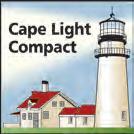
 Celebratorily, Dot
Celebratorily, Dot
Dear Dot,
Has anyone noticed the slow creep of plastic packaged produce in the vegetable and produce aisles in our grocery stores? Many items pre-sliced (mushrooms, spiralized squashes, and so on) or pre-cooked (beets, lentils, etc). For sure a convenience, but at what cost? Others just bagged and boxed. Even organic salads boxed in plastic! Whatever happened to being able to just put the produce of your choice in the quantity of your choice in a string bag? A recent visit to Whole Foods, where most produce is still available unpackaged, suggests to me that we could do better.
–Lowely Finnerty, Martha’s Vineyard
Dear Lowely,
I have indeed noticed, and I share your dismay. But, as you know, I am a take-action kinda gal and I encourage both of us, now that we’ve grumbled and lamented, to join forces to create the change we want, or at least slow down the plastic proliferation that threatens to invade every part of our lives. There are a few things we can do:
✔ We can use our wallets to purchase products that aren’t overpackaged.


✔ We can use our voices to tell store managers exactly what we want to see and why (and let them know when they’re getting it right).
✔ We can encourage our politicians to push legislation that bans single-use plastics for packaging, such as the recent Canadian ban on single-use plastics, which includes clamshell packaging, like the kind in which our berries and our salads are often sold. Unsure how to effectively communicate with your reps? The University of California has put together a helpful guide: bit. ly/Berkeley-reps. Regarding plastics, California is out in front with legislation that demands a 25% drop in single-use plastic by 2032 and that at least 30% of plastic items sold or bought in California are recyclable by 2028. It’s a start, I suppose, but every state needs to be doing better.
✔ We can support organizations that are dealing with the existing plastic fallout (literally — researchers have found microplastics in our drinking water, the air we breathe, even in the placentas of unborn babies). Just look at the work and impact of organizations such as Surfrider Foundation with chapters around the U.S. that keep the focus local, and The Story of Stuff Project, two of my faves! I promise you’ll be inspired.
Unpackagedly, Dot
DEAR DOT 19 marthasvineyard. .com
Please send your questions to deardot@bluedotliving.com PROUD SPONSOR OF 1-800-797-6699 CapeLightCompact.org With high energy prices, efficiency upgrades can help you save! Renters and owners can shedule a no-cost home or business energy assesment. We can help you: Create an energy action plan Access incentives for energy efficiency upgrades ENERGY EFFICIENCY ADDS UP
Cruising with Currier
Our writer’s childhood friend drives him out to the Crick House.
When I heard that my friend Melinda Loberg was getting a new Rivian R1T electric truck I knew just whom I’d be taking on my next Cruising with Currier ride. And I knew just where we’d be going for the trip.
Rivian is an American-made electric vehicle automaker based in Irvine, California, that has a line of sports utility vehicles. But we’d be driving in one of the Rivian R1T pickup trucks, which helped Rivian earn a place on Time Magazine’s list of 100 most influential companies of the year in 2022.
Melinda is known on the Island as a former Tisbury selectperson and has been active in a number of environmental causes. She was part of the effort to bring nitrogen-reducing septic technol-
ogy to the Island; she was involved with various stormwater initiatives through the Tisbury Waterways Inc., chaired the Tisbury Climate Committee, and was a member of the Island Grown Initiative and Vineyard Vision Fellowship Organics Committee that helped bring composting to the Island.
Melinda and I grew up in the same town outside of Boston, but her roots on the Island run deep. Her grandfather, Raymond Cleveland Fuller, was born and raised on William St. in Vineyard Haven and ran a small grocery store in town.
From the 1950s on, I spent many a summer at “the Crick House,” the name the Fullers gave to the cottage out at the end of Herring Creek Road, out by the breakwaters leading into Lake Tashmoo. There had always been a few fishing camps out there but the hurricane of 1938 reshaped the landscape. Up until then, Lake Tashmoo had been a freshwater pond, and Herring Creek Road ran
all the way to Menemsha, and was used for delivering mail and milk. After the hurricane, the Army Corps of Engineers put in the jetties and opened up Tashmoo to the ocean.
Melinda’s grandfather bought three small slices of land out at the end of Herring Creek Road to pass along to his family and had a little prefab cottage brought over by barge. And it was here that Melinda’s family, often joined by us Curriers, would spend idyllic times on the beach in a tiny cottage with no utilities, out at the end of a three-mile dirt road that was so rough it was like taking a ride on the back of a dragon. I knew this was the place to take Melinda’s new Rivian for a test drive.
The Rivian R1T bills itself as being the ultimate adventure car, taking camping and off-road exploration to the next level. As Melinda said, “This car really puts the emphasis on camping and offroad adventuring.”

20 MARTHA’S VINEYARD /FALL-WINTER 2022-2023
Story by Geoff Currier Photos by Sheny Leon
FEATURING MELINDA LOBERG’S RIVIAN R1T
With our photographer, Sheny Leon, in the back seat, me riding shotgun, and Melinda at the wheel, we set off for “the Crick House.” The first thing Melinda did was put the car in the off-road setting and we could literally feel the car lift up — it rises 13 inches — giving it extra clearance.
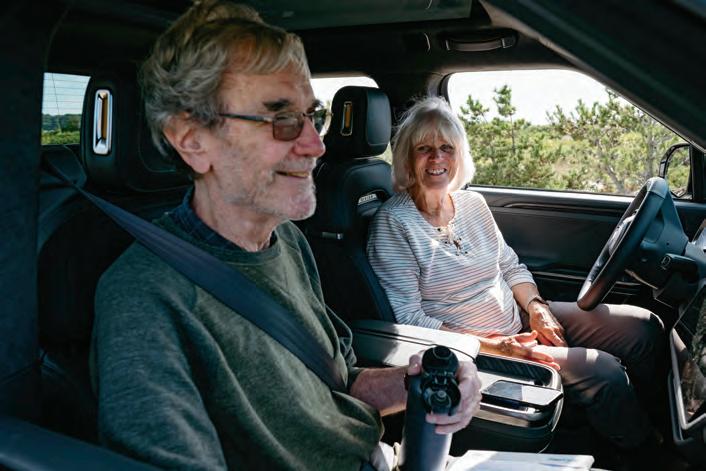
My memories were of my head being smashed against the ceiling in previous rides along Herring Creek Road. “This doesn’t seem as rough as it used to be,” I said, turning to Melinda.
She explained that the town and the Land Bank had been working to smooth out the road, but added, “It’s the car. The reason the ride is smoother is the car!”

The Rivian isn’t the Lobergs’ first experience with an electric vehicle. They previously leased a Tesla S and totally bought into the EV mentality, but when the lease was up, Melinda said, “You know, I was thinking that I’m not really a car person, and my husband liked the idea of having a truck so when we saw the Rivian electric pickup we thought that this could be the car for us.
“There are no dealerships,” Melinda
said, “so we negotiated the purchase online and we were assigned what Rivian called ‘a handler’.” Melinda said she thought, “my God, am I joining a cult?” As it turned out, the whole process was handled about as smoothly and expeditiously as possible. In fact, someone at the Registry of Motor Vehicles went out of their way to compliment Rivian on how well they had handled their customer service process.
“We placed the order around last Thanksgiving,” Melinda said, “and they told us we could expect delivery around the first of 2022. However, it took until around June before we started getting calls
from the manufacturer and we took final delivery in August.”
Continuing our trip out Herring Creek Road, we stopped at the Crick House to take some pictures. This gave Melinda a chance to take us through some of the features of the car, which, given that she’d only taken delivery of it a couple of weeks earlier, she was still just learning about.
As Melinda said, Rivian was really going for the camping market and the company was doing everything it could to take you into the niche of roughing it in style. Starting with a kitchenette.
We stood outside the car and Melinda pointed to an 11-cubic-foot, so-called “gear tunnel” located just behind the rear
FEATURE • CRUISING WITH CURRIER 21 marthasvineyard. .com
The Rivian R1T can go from zero to 60 in 3.3 seconds. Readers are advised not to try this on the Island's dirt roads.
Geoff Currier and Melinda Loberg grew up as childhood friends.
As Melinda said, Rivian was really going for the camping market and the company was doing everything it could to take you into the niche of roughing it in style. Starting with a kitchenette.
seats where you could see from one side of the truck to the other and where a kitchenette could be accommodated. The Lobergs hadn’t purchased the kitchenette feature, but their son who does a lot of camping did purchase it for his car.
According to an online manual, the kitchenette, when installed, would contain a grill, a collapsible sink with a spray faucet, and a four-gallon water tank. Mini-kitchen drawers would contain everything from titanium cutlery to a water kettle.
Beyond the kitchen, the thing that really caught my eye, as someone who enjoys occasionally going off-road, was that the R1T comes with an onboard compressor. Press a button and you can take pressure out of the tires to enable the car to drive on the sand, and when it’s time to head home, the compressor can refill the tires to their prescribed levels, which eliminates the need to find a gas station. Another attractive feature is a roomy tent that can sleep three and sets up off of the flatbed.
Admittedly, you pay a price for the Rivian R1T, depending on which package you choose. The vehicle starts in the high $60,000s range. But consider the performance.
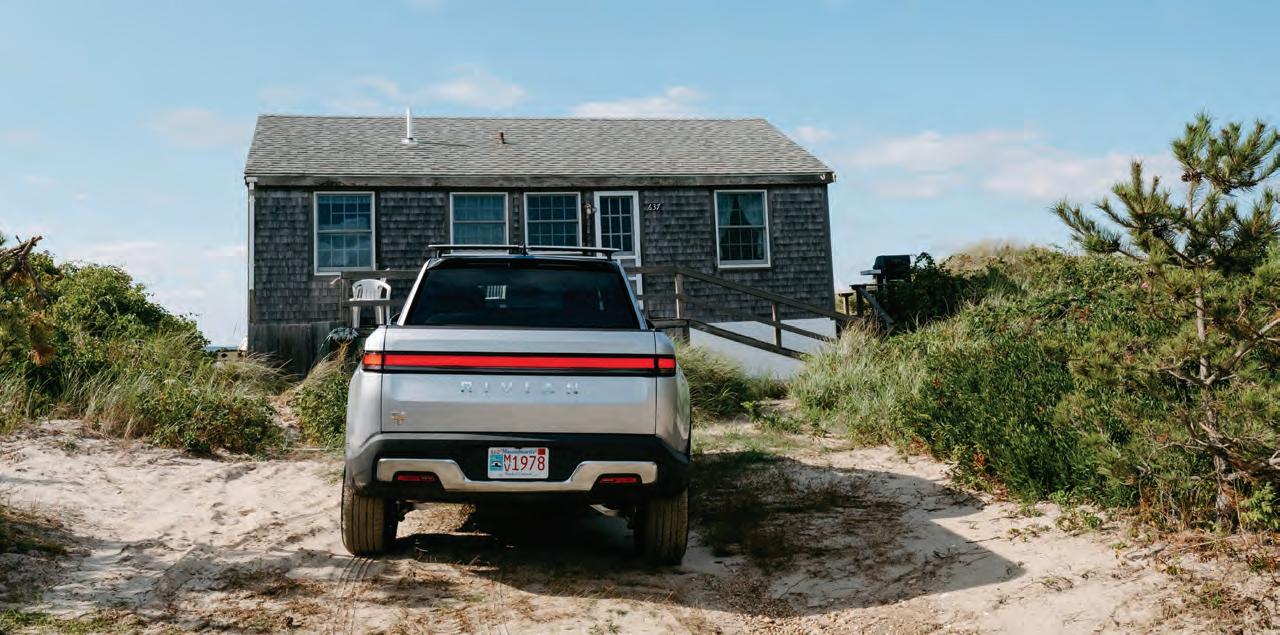
While Melinda has only had the car for a few weeks, she’s still working out the actual numbers. But according to the
manufacturer it has a highway range of 220 miles, goes from 0 to 60 in 3.3 seconds, can climb a 45-degree incline and gets an impressive 35 MPGe for mileage. “MPGe” is the more useful metric for comparing energy consumption of electric vehicles. The Lobergs charge the Rivian

overnight with a level two 220-volt charger they had installed in their house. And then there are those headlights. Rivian calls them “stadium lights,” and what makes them unique is that they’re vertical. They’re arguably the most distinctive headlights in the automotive industry today. Which depending on the eye of the beholder are either ugly or the second coming of E.T. I happen to think they look pretty cool.
Editors’ note: As we sent this issue to the printer, Rivian announced a recall for the RiT truck to address steering issues.
The Facts
2022 Rivian R1T
electric vehicle pickup truck
From $73,000 (less rebates)
Highway range: 317 miles
Battery charge time: 13h at 220V
Battery: 135 kWh lithium-ion
Bed length: 54"
Cargo volume: 11.9 ft³
All wheel drive
Towing capacity: 11,000 lbs
Where to charge an electric car on Martha’s Vineyard: bit.ly/MV-E-Cars
22 MARTHA’S VINEYARD /FALL-WINTER 2022-2023
Currier and Loberg spent summers hanging out at the Crick House when they were kids.
Below, the "gear tunnel," which alllows for the optional kitchenette.
It was here that Melinda’s family, often joined by us Curriers, would spend idyllic times on the beach in a tiny cottage with no utilities and out at the end of a three-mile dirt road that was so rough it was like taking a ride on the back of a dragon.
GIVE Better
Conservation-minded nonprofits share their progress and wish lists.
As you consider your year-end giving, please remember these Island organizations..
To : Bluedot Living
From: MVAtlas of Life
Subject: Subject: 3,100 MV species!
A community-based project to document the Vineyard’s biodiversity, the Martha’s Vineyard Atlas of Life (MVAL) launched a brand new website this past summer at mval.biodiversityworksmv.org. The site includes links for reporting wildlife sightings, listings of wildlife-related resources and events, and most importantly, a collection of checklists and brief essays presenting what is known about various groups of species on the Vineyard. The website will grow over time as more information becomes available, with the goal of being a one-stop resource for anyone interested in studying, appreciating, or conserving the unique biodiversity of Martha’s Vineyard.
Much of the momentum and information for the MVAL comes from its associated project in iNaturalist, a community science platform found at iNaturalist. org. The project, essentially a compilation of observations contributed to iNaturalist by users on Martha’s Vineyard, has grown rapidly in 2022 and currently contains about 21,500 records documenting more than 3,100 Island species. The iNaturalist platform, which operates worldwide, provides identification assistance to users and includes built-in tools for data analysis.
Begun in February 2021, the MVAL is a joint project of BiodiversityWorks and the Betsy and Jesse Fink Family Foundation (BJFFF.org). You can support the MVAL effort by visiting its new web-
site, by using iNaturalist, or by making a donation at biodiversityworksmv.org/ support-us.
To: Blue Dot Living
From: Great Pond Foundation
Subject: A productive season of ecosystem monitoring on Island Ponds
The Great Pond Foundation (GPF) had an action-packed field season on the ponds and in the lab conducting collaborative research to preserve the ecologically fragile coastal ponds of Martha’s Vine-

yard. From May through October, 2022, Scientific Program Director Julie Pringle and Watershed Outreach Manager David Bouck led water quality and cyanobacteria monitoring programs across ten ponds, an increase from five bodies of water in 2021. The water quality data is used to assess ecosystem health and inform local management. The cyanobacteria collection is part of the MV CYANO program, a partnership among Island Boards of Health and GPF scientists to monitor cyanobacteria locally.
Additionally, the field work and laboratory research included summer interns, seasonal staff, and visiting scientists. To showcase the flora and fauna of Island
23
.com
marthasvineyard.
· · ·
Great Pond Foundation crew members Owen Porterfield, Emma Rosser, and Katelyn Hatem deploy a drop camera to monitor seagrass abundance in Edgartown Great Pond.
ponds, the GPF team also conducted four beach seine events — a hands-on approach to develop young scientists interested in Island coastal ecology! After a season filled with science, education, and collaboration, GPF staff look forward to analyzing the 2022 data to promote conservation of coastal ecosystems.
2022 Scientific Fun Facts:
• 945 cyanobacteria samples collected (and counting!)
• 67 days in the field, often visiting multiple ponds in one day
• 50 regularly monitored sampling locations
• Greater than 2,000 unique data points collected (and counting!)
• 26 water quality parameters monitored
You can donate here: greatpondfoundation.org/make-a-gift/
As Polly Hill Arboretum heads into its 25th year as a public garden, we celebrate our community connections and our international reputation as a plant science organization. But to carry out our mission in the future, we are clearly dependent upon our ability to hire and retain high-quality staff.
They conduct our education programs, maintain our grounds, propagate seeds, and protect our collection.
Will the buildings be environmentally friendly?
Yes, the Arboretum is in the Mill Brook watershed and we have taken that into consideration by planning an enhanced denitrification septic system. The houses will have solar panels and are placed to minimize both tree cutting and clearing and their impact on the woodland and wildlife. The homes will be heated/cooled using electric heat pumps and there will be an electric car charging station.
To : Blue Dot Living
From: The MV F ishermen’s Preservation Trust
Subject: MV Fishermen’s Preservation Trust
Sustainable Project Recap
Throughout the summer and fall of 2022, we have been working with the University of New Hampshire on the development of an alternative bait for the whelk/conch fishery, which currently relies on the use of horseshoe crabs. That is far from ideal, as horseshoe crabs play important ecological roles. They are bioturbators as they forage for food, their eggs are a vital food source for migratory shorebirds, and their blood is essential in the biomedical industry.

The overall goal of our project is to find an effective, alternative bait that utilizes less or no horseshoe crabs, is lower in cost, lower in environmental impact, and utilizes sustainable ingredients such as waste products and invasive species. Using the “Whelk TV,” an underwater camera system mounted over a typical conch pot designed to capture more than 24 hours of day and night footage, we can assess how effective the alternative baits are at attracting whelks. So far, we have tested baits that rely on invasive green crabs, surf
To : Blue Dot Living
From: Polly Hill Arboretum
Subject: Sustainable staff housing
The Arboretum has embarked on a staff housing initiative using sustainable building design, including solar, and a denitrification system. Here is a link to the project (bit.ly/polly-hill) and some current photos.
Landscape plants are being grown by Polly Hill, utilizing wild-collected seeds native to Martha’s Vineyard.
The final cost will be about $1.4 million; Polly Hill aims to raise $700,000 of that, and $400,000 has already been raised. The project should be complete by the end of summer, 2023.
To donate: bit.ly/polly-hill-housing
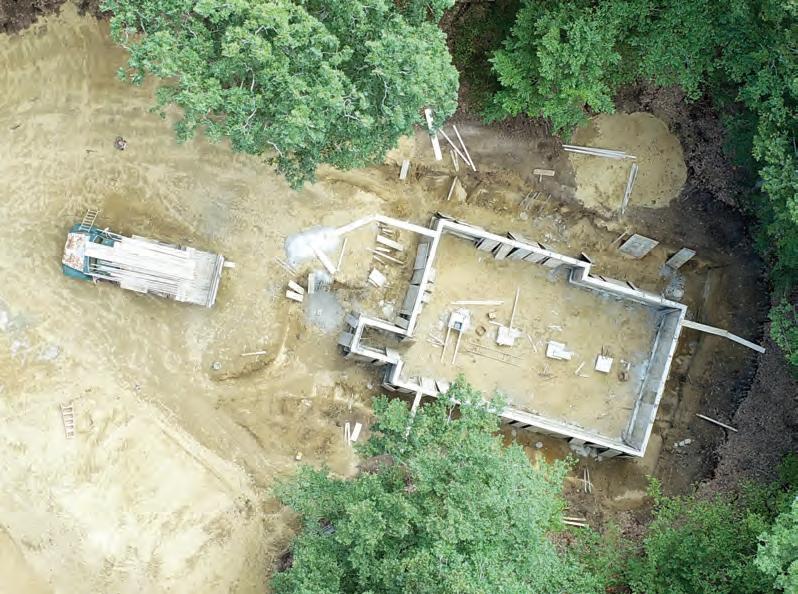
24 MARTHA’S VINEYARD /FALL-WINTER 2022-2023
·
· ·
· · ·
Polly Hill's staff housing project.
An MVFPT whelk project.
clam bellies, and other waste from the clam processing industry. The numbers have not been crunched yet, but we are planning to continue to modify the recipe and are hopeful it will eventually eliminate or lessen the use of horseshoe crabs as bait.
Here’s how to donate: mvfishermenspreservationtrust.org/donate.
To: Blue Dot Living
From: V ineyard
Conser vation Society
Subject: Take Back the Tap!
The Vineyard Conservation Society has been working to make fresh potable tap water more readily available on the Island by installing water bottle refill stations. These stations reduce the need for plastic water bottles. So far we have saved thousands of plastic water bottles from the waste stream here on the Island.

VCS Bottle Refill Station Background
Beginning in the fall of 2015, we began working with the MVRHS environmental club to install a refill station in the high school. From there we gained momentum and with the help of a generous donor looked to all the schools on the Island with the purpose of installing at least one unit in each school. After many meetings, letters to administration, and haggling with plumbers, we finally installed the last school unit at the end of 2017. Although it was a great accomplishment, it was more like the first of many stages in our TBT (Take Back the Tap) initiative! The second stage was to be all non-school public buildings, mainly those that serve children. We are still somewhat in phase 2, while also delving into stage 3 — mostly outdoor locations (parks, community centers, downtowns, etc.). We aim to create a network of refill stations on MV that will cover every town, public
building, transportation hub, and tourist destination! Currently there are over 25 working units all over the Island. More are going in each month!
MV Tap Map. A decal is available for businesses to display their support for this initiative.
Here’s where you can donate: bit.ly/vinCS-support
To: Blue Dot Living
From: BiodiversityWorks
Subject: BiodiversityWorks
is Digging into our Mission
PFMV
Plastic Free MV has successfully banned plastic water and soda bottles in all of the six Island towns. Enforcement has been an issue, and we feel the more public refill stations we can provide to the public, the easier it is to comply.
MV Tap Map
We have created a Google map with all of the working, in-process, and wishlist locations of the refill stations. The MV Tap Map is an interactive map that can be accessed at our website by scanning the QR code on our decals and PFMV water bottles, or on the TrailsMV app. See the MV Tap Map here: bit.ly/MV-TAP-MAP
Building the Refill Station Network

Collectively with the installation of refill stations, VCS is asking businesses to participate in the “Take Back the Tap” initiative. Participating in the initiative could look like a self-serve dispenser, staff trained to fill a customer’s reusable water bottle, or purchasing and installing a refill unit. Participating businesses will be highlighted on the Vineyard Conservation Society website and
Over the last year, BiodiversityWorks began to dig into our mission in new ways. With a federal grant, we are building and testing underground hibernation sites for bats because the dirt crawl spaces and cinder block foundations under houses where they typically hibernate are disappearing when older houses are sold and demolished. Attracting bats to these new safe, underground hibernation sites is the next step in our work. We are also creating underground hibernation sites for snakes in protected areas so that they do not have to cross roads to find winter shelter. Black racers, the Island’s largest snake, were common across the Vine-
Continued on page 61
GIVE BETTER • NONPROFITS WISHLISTS 25 marthasvineyard. .com
· · ·
· · ·
A VCS refill station.
A BiodiversityWorks hibernation site.
Rachel Carson In Woods Hole

It’s fitting that there are ospreys wheeling over the Rachel Carson statue in Woods Hole when I visit one hot afternoon in May. Sightings of these fish-eating raptors are commonplace around Vineyard Sound today, although populations were decimated in the 1950s and ’60s. The decimation can be attributed to DDT — a pesticide that rendered osprey eggs thin and crushable, until it was federally banned in 1972. And the ban on DDT? That can be attributed, in large part, to Rachel Carson.
Carson’s hit book Silent Spring helped launch the environmental movement in the U.S., and it made Carson, a former writer for the U.S. Fish and Wildlife Service, a household name. Published in 1962, Silent Spring warned against the deleterious impacts of DDT on humans and the environment. Although Carson received criticism from the chemical industry and its allies, she bravely defended her research until she died from complications of cancer in 1964.
But before Carson’s public recognition and controversy, before the science advisory committees or Silent Spring’s serialization in the New Yorker; before the Atlantic articles or the uncannily profound Fish and Wildlife brochures … there was Woods Hole.
“I had my first prolonged contact with the sea in Woods Hole,” Carson wrote, a quote now engraved beside her statue. “I never tired of watching the tidal currents pouring through the hole — whirlpools and eddies and swiftly racing water.”
The 22-year-old Carson first arrived at the Marine Biological Laboratory (MBL) in Woods Hole in the summer of 1929, just a couple of months before she was slated to begin graduate work at Johns Hopkins University. Her requests to the MBL were meager: just the “usual laboratory facilities for dissection.” But what Carson found was an artistic and scientific muse, tucked between Buzzards Bay and Vineyard Sound.
26 MARTHA’S VINEYARD /FALL-WINTER 2022-2023
Story by Kelsey Perrett Photo by Sam Moore
A statue in Waterfront Park honors the esteemed nature writer's little-known connection to the Cape Cod coast.
“Woods Hole is really a delightful place to biologize,” Carson wrote in a letter to a friend. “I can see it would be very easy to acquire the habit of coming back every summer.” Carson did not return to Woods Hole every summer, but she did return often. She learned to swim here. She became the first woman to go to sea on a Bureau of Fisheries (now the National Marine Fisheries Service) research vessel. And the inspiration she siphoned from the sea was the impetus for some of her most impactful works. Chief among those was The Sea Around Us, a 1952 National Book Award winner, and the second book in Carson’s “sea” trilogy. The Sea Around Us catalogs a near-complete natural history of the ocean, poetically spanning the whole of geologic time in the course
“There is no doubt that the genesis of … The Sea Around Us belongs to this first summer in Woods Hole,” Carson’s biographer, Linda Lear, wrote. And so it was in Woods Hole that Carson’s publishers staged the publicity photo for The Sea Around Us — the very photo on which her statue is based.


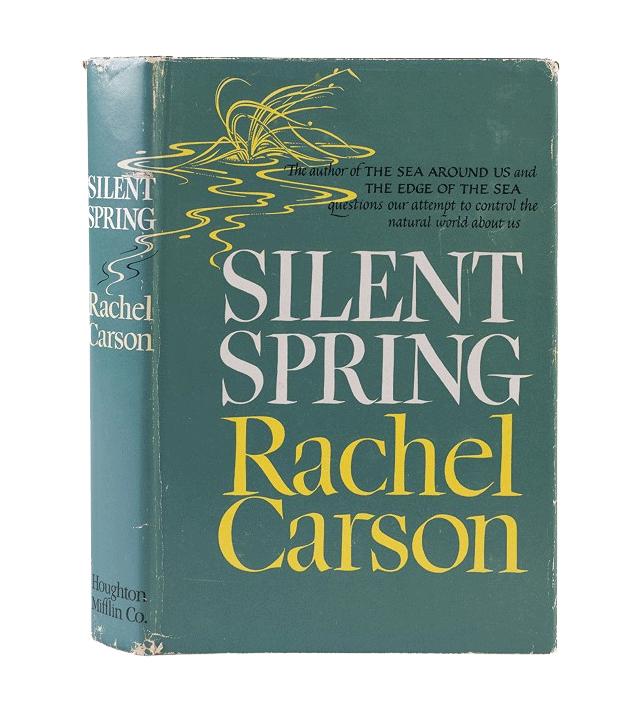
In it, the author is posed with a pen and a notebook at Sam Cahoon’s Fish Market, not far from the Steamship Authority dock. Her eyes are turned seaward, and although there is a calm pensiveness about her gaze, it is likewise resolute, determined. Perhaps not the idealistic gaze of a young woman looking toward a future in marine biology, but of a woman who knew enough of the Earth’s history to have some reservations about the Earth’s future. A future when, on an unseasonably warm May day, the sun will render the bronze sculpture scalding hot — hot enough that the caretakers of Waterfront Park will erect a warning sign.
So when sculptor David Lewis cast Carson’s face, he changed the original image slightly, adding just a hint of a smile. Because after all, Carson was in Woods Hole, looking towards the sea she so loved. Because yes, it may be getting hot. The surf may creep closer to the statue’s skirts each year. But as long as there are Rachel Carsons, those who champion science and the environment against all odds … there may also be ospreys.
The coastal ponds of Martha’s Vineyard are globally rare and ecologically fragile treasures whose preservation and restoration are fundamental to the Island’s long-term sustainability. These living waters define both the spirit and the character of our community.

MISSION STATEMENT

PROFILE • RACHEL CARSON IN WOODS HOLE 27 marthasvineyard. .com
Stay informed by visiting GreatPondFoundation.org
To cultivate the resilience of our coastal pond ecosystems through science, collaboration, and education.
TM
HOW TO LIVE ON MOTHER EARTH
Editor's note: Island painter Doug Kent works in a primitive style that evokes early times. We thought his style was appropriate for a story celebrating ancient wisdom.
"FALL" DOUG KENT, COURTESY OF THE GRANARY GALLERY

TRADITIONAL ECOLOGICAL KNOWLEDGE • FEATURE 28 MARTHA’S VINEYARD /FALL-WINTER 2022-2023
One afternoon during the summer of 1984, seven-yearold Jonathan Perry and his family set out to explore the woods in Tiverton, Rhode Island, part of the traditional territory of the Wampanoag nation.
As they grew closer to the edge of a wetland, the soil beneath the deciduous trees became dark and spongy, and mosquitoes hung in the humid air. It was Jonathan’s father who made the discovery — an Indian cucumber, identifiable by its two-tiered umbrella of leaves and light-colored flowers on top. They dug one up from the soil and made a refreshing snack of it.
The moment struck Jonathan and stayed with him throughout his life. Traditional harvesting practices and subsistence living — both key elements of Traditional Ecological Knowledge (TEK) — confirmed for him that the world around him would provide for
him, strengthen him, and at times, heal him. Now a tribal council member for the Wampanoag Tribe of Gay Head, Jonathan has been practicing TEK his entire life, accumulating an encyclopedia of Indigenous knowledge. He feels lucky to have grown up in a family that
I harvest the Indian cucumber in small quantities for my family,” he says, “I celebrate that gift of knowledge and that day, that moment.”
Traditional Ecological Knowledge is an integrated system of knowledge, practices, and beliefs, developed and passed down over millennia in Indigenous cultures. It encompasses patterns of fluctuation in climate, sustainable harvesting, adaptive resource management, and the use of disturbance regimes, such as fires or grazing, to manage land. Central to TEK is a philosophical respect for the environment and a sacred, non-exploitive relationship with the land.
Increasingly, TEK is being recognized as critical to our approach to climate change. “We were given provisional instructions — how to live on Mother Earth,” explains Bettina Washington, the Tribal Historic Preservation Officer of the Wampanoag Tribe of Gay Head.
“We lived like that for twelve to fif-

FEATURE • TRADITIONAL ECOLOGICAL KNOWLEDGE 29 marthasvineyard. .com
GENERATIONS OF WAMPANOAG WISDOM CAN HELP US CARE FOR OUR LAND (IF WE ARE READY TO LISTEN).
The moment struck Jonathan and stayed with him throughout his life. Traditional harvesting practices and subsistence living — both key elements of Traditional Ecological Knowledge (TEK) — confirmed for him that the world around him would provide for him, strengthen him, and at times, heal him.
teen thousand years and, if we were not interrupted by European settlement, we’d still be living that way and the Earth would not be in the condition that it’s in right now,” says Linda Coombs, a tribal member and researcher for the Wampanoag Project at the Plimoth Patuxet Museums in Plymouth. “It worked, and
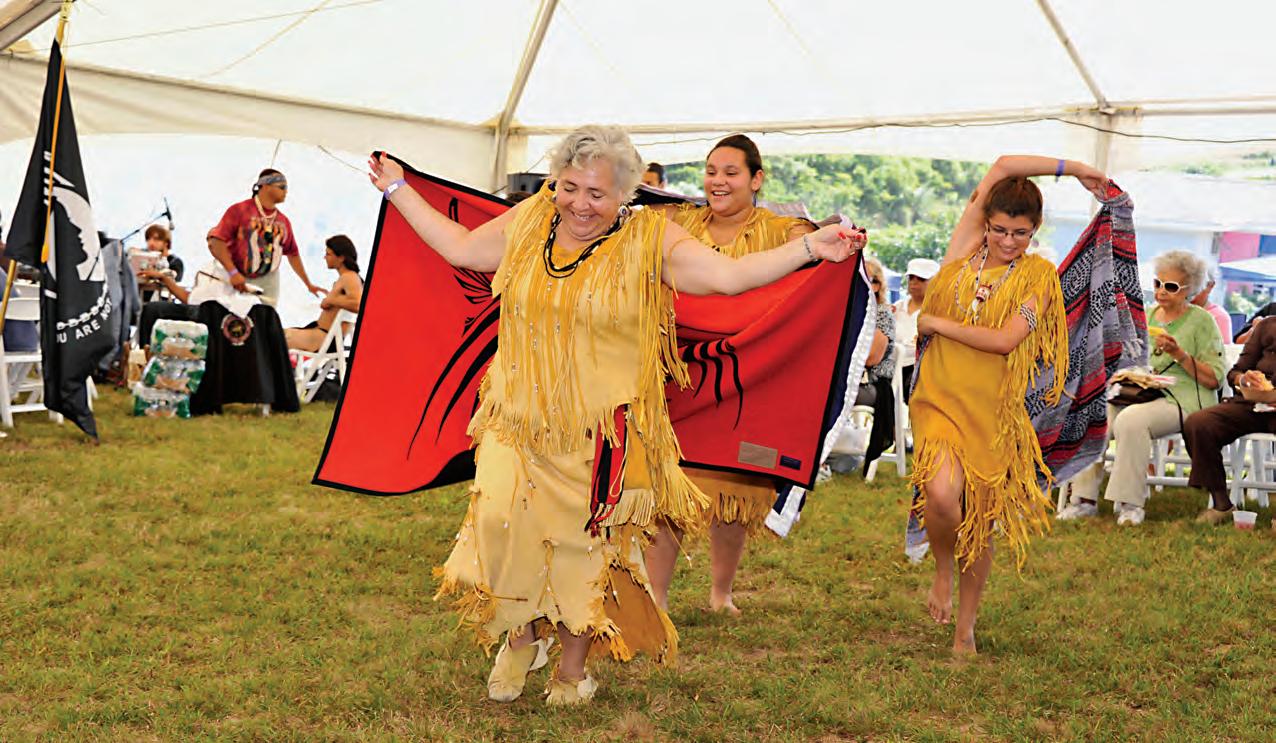
that’s why we kept doing it. We did not make the Earth conform … We observed the Earth and what it could do, and then our culture, our thinking, was formulated around that.”
According to a 2021 report from the United Nations Department of Economic and Social Affairs, Indigenous
peoples account for 5% of the world’s population, but manage a quarter of the Earth’s land surfaces. These lands hold 80% of the planet’s biodiversity, and 40% of all terrestrial protected areas and ecologically intact landscapes.
Growing up in Dartmouth, Massachusetts, Jonathan Perry absorbed ecological knowledge from many ancestral connections, including family members from the Vineyard, Westport, and New Bedford. His immediate family, including his older sisters, served as his first teachers.
In Dartmouth, his family found both traditional and contemporary ways to engage with and care for the landscape, including fishing, canoeing, camping, and beach cleanups. They took part in lectures and classes, such as animal observations and fish studies, at a local environmental studies center.
But Jonathan’s speciality was always in harvesting and subsistence living. “I learned at a very early stage in my life that you appreciate the very first things that you find, but you don’t touch them,” Jonathan says. “You go farther out, because you always want things to

30 MARTHA’S VINEYARD /FALL-WINTER 2022-2023
Bettina Washington at a tribal powwow in Aquinnah
"BERNICE" DOUG KENT, PHOTO BY GARY MIRANDO
PHOTO: LISA VANDERHOOP
come closer to your community and closer to your home. You always want the plants to be abundant and to spread.” He learned about edible and medicinal plants. There are hundreds, perhaps even thousands, of uses for a single plant depending on how and when it is gathered and processed, Jonathan says. Strawberries, or wutâhumunash, for instance, are called the “heart berry” because they look and bleed like a heart and work as a blood thinner. The leaves can be used for tea or cut for ceremonial tobacco. The berries themselves can be medicine — a detoxifier high in antioxidants.
Jonathan learned to assess soil quality by observing plant growth, considering the taste, distribution, size, and health of the plants to understand the density or acidity of the soil. He planted nut-bearing trees, anticipating that each year he could fill an entire bag with the harvest it produced.
He learned the traditional method of hunting sturgeon, venturing out in dugout canoes under the light of the full moon, luring the sturgeon to the surface of the water with torches, and harpooning their vulnerable lower stomachs. Because of the collapse of the sturgeon population, however, Jonathan has seen very few in his lifetime.
He learned how the moon corresponded with key harvest times. He followed lunar phases for planting, timing of crops, the arrival of certain fish, and migration patterns.
“For my ancestors, learning is a lifelong journey that stops only when your heart stops,” Jonathan says. “There is no knowing it all, and there is no getting to a point where you’re done. It just goes until you can’t do it anymore, and then the mantle is taken up by the people who hopefully you’ve taught your whole life, who are able to take it a little further.”
Jonathan’s son Tristan, named after family ancestors, is five years old. Like his father, he is growing up with a family dedicated to passing down elements of TEK. He already wanders through the woods, identifying species of plants and gathering wild edibles. He digs
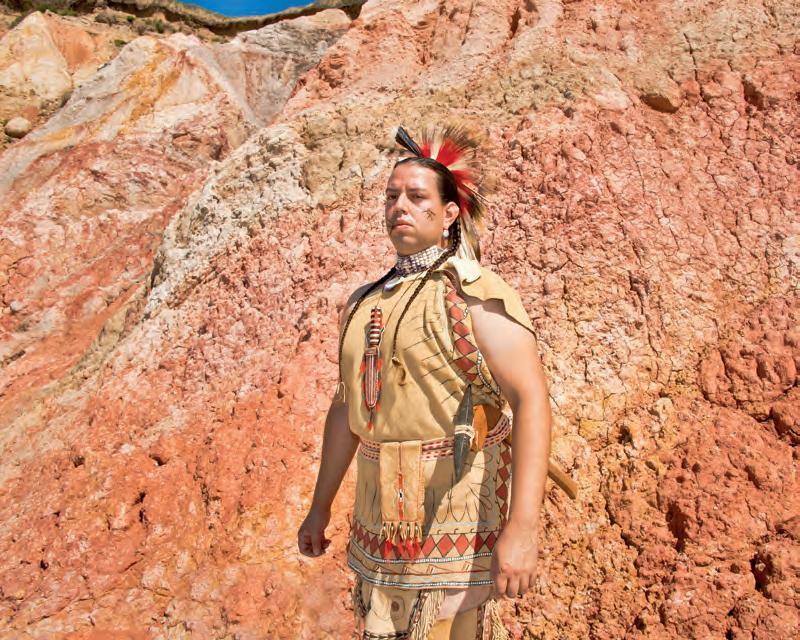
for quahogs at low-tide. He taps maple trees, helping boil the sap down to syrup and sometimes even to granular sugar for baking and coffee.
“He thinks it’s totally normal,” Jonathan says. “It makes you acknowledge the abundances and makes you sensitive to drought and environmental concerns. It teaches you to have respect for the land around you and take care of it as opposed to thinking of it as something that’s convenient and can be exploited in whatever way you see fit.”
Bettina Washington: Watching traditions fade
When Bettina Washington was born on the Island in 1959, most Aquinnah Wampanoag had a daily routine that was what we’d now call subsistence living. She remembers an abundance of family gardens — her grandfather, great aunt, and uncle each tended to the earth, growing sunflowers, squashes, beans, and tomatoes. Meals came from the ground or the ocean. The Wampanoag community didn’t have a word for money, she says. The wealth was always in the food itself, and it came in its own time.
The timing of food provided opportunities for ceremony and celebration, she says, noting that it’s difficult for others to understand now the joy that the Wampanoag felt in the spring when the herring returned. After surviving the cold months eating stored smoked and dried fish, she says, they would rejoice in their newfound abundance. Her family focused on self-sufficiency, rarely venturing down-Island and learning to make do with what they had. Her older cousins told her of a time that her
FEATURE • TRADITIONAL ECOLOGICAL KNOWLEDGE
31 marthasvineyard. .com
Jonathan Perry dressed for a powwow at the Gay Head cliffs.
PHOTO: LISA VANDERHOOP
“We observed the Earth and what it could do, and then our culture, our thinking, was formulated around that.” –Linda Coombs
grandmother would pick a chicken from the backyard to prepare for dinner.
But soon enough, neighbors within the community turned to the Island grocery stores, and practices such as slaughtering chickens dwindled.
“For the majority of the population, all that unsavory business has been taken care of. We’ve met the sterilized version,” she says. “But it’s all alive. We have to say thank you, we need to acknowledge their life.”
As long as people can pay for it, she says, food is always accessible, regardless of the Earth’s season.

“When you walk into the grocery store, you see all this food — it’s like it just
magically appears,” Bettina says.
“You can get strawberries anytime. But nothing tastes as sweet at those strawberries that you pick right from the ground. When you see the little white blossoms, you know that nothing tastes like that.”
Disruptions to TEK — climate change, colonization and urbanization
Climate Change
Generational TEK has been threatened by a multitude of factors over the past few centuries. The interrelated challenges of climate change, colonization, and separation from the land have taxed
Indigenous communities’ ability to practice traditions and pass down knowledge. The key to being able to do what my ancestors did frequently was having a healthy environment, says Jonathan.
He says the assumption that the devastation of Indigenous communities is because of sickness and guns is over-simplistic and unrealistic. Rather, he points to environmental degradation from invasive species imported by Europeans, overfishing, over-hunting, clear-cutting and deforestation, and the replacement of commercially valuable species that sustained communities. Each of these contributed to the destabilization of Indigenous cultures, he says.
Extractive practices diminished the availability of resources that were critical for TEK. Certain types of woods or plants, for example, are necessary to frame the cordage to form the eel trap, he explains, but during European contact, these sources were overharvested or cleared for animal grazing. “Then guess what? No more eel traps,” Jonathan says. “Nothing is what it was for our ancestors.”
Europeans also introduced a completely different way of looking at the environment, Jonathan says, “a different way of valuing the diversity of plant and animal species is one of the things that ended a lot of traditional practices and a lot of opportunities to maintain our communities.”
Colonization
Colonization and compulsory processes of assimilation also diminished TEK, explains Linda Coombs. “Civility,” enforced through Christianization, mandated relocation and dictated that Indigenous communities change their relationship with the land.
“We didn’t just one day lose everything,” says Linda. “That was a gradual process … We lost language, we lost culture, we lost land. One of the biggest factors in losing culture was losing our land, because it was our relationship with the entire landscape that really formed the parameters of how we acted. Our whole culture is based on that.”
32 MARTHA’S VINEYARD /FALL-WINTER 2022-2023
Camille Madison in Aquinnah.
PHOTO: JEREMY DRIESEN
Urbanization
Urbanization and development continues to impact the Wampanoag community, many of whom left their traditional lands because of resource scarcity, and relocated to Boston or other urban centers. “We’ve been removed in some ways from the stewardship that we once had with the land, and our responsibilities to it,” says Camille Madison, a member of the Wampanoag nation, who grew up in the Gallivan housing project in Mattapan. Separated from her land and community, she has spent her adult life reconnecting with Wampanoag culture.
Camille’s grandmother, Freda Belain, was raised in Aquinnah, where she became well acquainted with the landscape, knowing where to find the cranberry bogs and abundant food. When she was older, Freda spent the summer sea-scalloping. Yet, as the conditions of the Island changed and the scallops depleted, she and other members of the Wampanoag community could no longer rely on those methods to feed their families. Freda moved her family to Boston in the late 1960s, to a new high-rise apartment on Tremont St. where even gardening was not possible. Separated from the land, it became challenging for Freda and Jean Anne, Camille’s mother, to pass down TEK to Camille. “Without having the woodlands there, it’s hard to teach about the woodlands,” Camille says. “It’s hard for a child to even want to engage in learning about the woodlands if
[she’s] not there. There’s nothing relatable … I wasn’t raised in the place where I felt like that knowledge lived,” she says.
Every few months, however, Camille would travel with her grandmother and mother to Aquinnah to attend a social event, such as annual family day or cran-
could still hear the rustling of nature and the waves crashing on the cliffs. She had always wondered what it meant to truly be Wampanoag, and while on Island, she was determined to learn more about the land, the plants, and her ancestral culture.
As a high school sophomore, Camille attended the North American Indian Center of Boston. One moment was pivotal for her: An elder asked her to find a pinecone and observe its spirals. After examining the patterned edges, Camille finally saw the design.
“The elder came back to me and started talking about how everything moves in circles,” she says. “And I think that was my introduction to really understanding — maybe not ecological knowledge, but how math ties into nature and also to ourselves. That was my first thought of how nature could potentially mean something bigger or have a greater purpose than what you think it does.”
berry day. The land, she says, filled her with a sense of belonging, wonder, and gratitude. She recognized it as the land of her ancestors, and could breathe the air knowing it was the same air her grandmother and great-grandmother breathed. “It was a completely different experience,” she says. “The land just speaks to you in a different way when you’re there.” In Aquinnah, Camille says, the sky was lit by stars and moons. If she sat in complete silence, she
Camille recalled the times her grandmother asked her to go and observe nature, to watch the frogs or see the squirrels. Nature, often overlooked, she says, was her greatest classroom.

She began gardening, planting the three sisters — beans, corn, and squash — along with cucumber, tomatoes, and strawberries. She learned to weave baskets alongside Miss Victoria, a Mashpee weaver who was raised by a Penobscot medicine man.
When the tribe was making cedar mats for the rematriation of a grave, elders invited Camille to sit with them to witness the process. First, elder men performed a ceremony to cut down the cedar trees and harvest the wood. They then stripped the bark and boiled those strips for weaving. Finally, they taught Camille the patterns to weave those cedar strips into baskets, mats, or belts.
From the women in Mashpee, she learned to skin deer and bears, and from many other teachers along her journey, she learned to fish, gather quahogs, cook, and bake with natural plants, and how to set traps and canoe. “I’ve learned a lot from everybody who was willing to share,” Camille says. “Our people were
Continued on page 62
FEATURE • TRADITIONAL ECOLOGICAL KNOWLEDGE 33 marthasvineyard. .com
"HEATH HEN" DOUG KENT, PHOTO BY GARY MIRANDO
In Aquinnah, Camille Madison says, the sky was lit by stars and moons. If she sat in complete silence, she could still hear the rustling of nature and the waves crashing on the cliffs. She had always wondered what it meant to truly be Wampanoag, and while on Island, she was determined to learn more about the land, the plants, and her ancestral culture.

34 MARTHA’S VINEYARD /FALL-WINTER 2022-2023 T
Story by Sam Moore Illustration Kate Feiffer
TThe “Celebrity Jets” account appeared on Twitter in October of 2021. Using publicly available aircraft transponder data, the account generated travel reports for private jets owned by celebrities and other wealthy people. It included the carbon emissions of each flight.
The account also generated headlines. Kylie Jenner, a frequent focus of ire, burned almost 5,000 gallons of jet fuel on a single trip to Paris, emitting about 48 tons of CO2. The one-way flight — not counting croissants — emitted more CO2 than what an average household on Martha’s Vineyard emits in a year. According to estimates from Google Flights, that’s almost one hundred times more CO2 than a person flying economy would generate on the same route (croissants not included there, either).
More surprising than Jenner’s luxury trip to France was the number of incredibly short flights reported by Celebrity Jets. Some were as short as 12 minutes, merely VIP shuttles between the various enclaves of Los Angeles. Each of these flights burned dozens of gallons of jet fuel, or the CO2 equivalent of about two months of regular driving in a passenger car.
The East Coast has its own fair share of bigwigs making short hops. Just this summer, country music star Kenny Chesney flew his Dassault Falcon from Portsmouth, N.H. to Nan-
tucket (flight time: 26 minutes, CO2 emitted: 2 tons), and filmmaker Steven Spielberg flew his Gulfstream to the Vineyard from New Jersey (flight time: 37 minutes, CO2 emitted: 3 tons).
Although celebrity jets are astonishing in their pollution (some say egregiously so), these flights are a more symbolic than substantive measure of aviation’s carbon liability. For every high-profile jet-setter, there are thousands of fliers who own fractional stakes in a private jet — a kind of timeshare for our gilded age of flight. There are even more who use Jet Cards: prepaid accounts that let you book jets on-demand. A look at the arrivals and departures at the Martha’s Vineyard airport shows many such flights, most of them operated by NetJets, a subsidiary of Berkshire Hathaway.
“Most private jets belong to companies like NetJets and not private citizens,” Dr. Joseph B. Sobieralski, a professor at Purdue University’s School of Aviation and Transportation told Bluedot. “Fractional ownership is a growing trend around the world with some operating like ridesharing companies in between reserved passenger movements.” NetJets owns around 800 planes, more than Southwest Airlines.
One recent study estimates the private aviation sector as a whole is responsible for about 40 million tons of CO2 each year, about as much as the entire country of Guatemala. This
represents roughly 4% of the emissions from aviation overall, but it’s concentrated in an alarmingly small subset of the population. The study in question called individual users of private aircraft “super-emitters” and estimated they were responsible for an average of 7,500 tons of CO2 per person per year. In contrast, the CO2 emitted per capita in the U.S., one of the highest emitting countries in the world, is between 15 and 20 tons a year.
The flying public has its own carbon hierarchy. Commercial aviation uses far more jet fuel in total than even the most prolific private flyers. So, even in a world with no luxury jets, we’d still be looking at a plane-shaped hole in the global carbon budget.
The most frequent flyers — the top 10% or so — are responsible for up to half of all emissions from commercial air travel. Legroom also comes into the equation. The International Council on Clean Transportation blames about a fifth of all emissions from commercial flight on first and business class passengers. Not to mention, only about 4% of people in the world fly at all.
So, there are commercial jets, private jets, private rent-a-jets, and then a small army of private helicopters, short-commute turboprops, and other small private aircraft. Furthest down the emissions ladder are the island-hopping propeller planes often glimpsed through the fences of small regional airfields. These tiny piston-powered planes are only a small piece of the puzzle.
“Private jets consume jet fuel (Jet A) as do turboprops, whereas piston-driven prop aircraft consume aviation gasoline, so they have different emissions,” Dr. Sobieralski said. Jet A is a kerosene-based mixture that is one of the most energy-dense fuels available to aircraft. Aviation gasoline, on the other hand, puts some small planes on par with something like a pickup truck. The single-engine Cessna that you might find in a Gary Paulson novel is to a private jet what a golf cart is to a stretch
FEATURE · PRIVATE JETS 35 marthasvineyard. .com
While they account for less than 5% of aviation emissions, private jets still emit more than some small countries. Can we talk about that?
Hummer. And you can imagine which is easier to electrify.
But that’s the problem at hand: how to reduce emissions from flying? Since aircraft have a long lifespan compared to the amount of time we have left to prevent catastrophic global warming, what happens in the aviation industry this decade, and even in the next few years, will shape everything to follow.
The ICAO, the United Nations agency that deals with aviation, recently got its member states to agree to a “longterm aspirational goal” of getting international, cross-border aviation to Net-Zero by 2050 — a nonbinding commitment, but still one that signals willingness to reduce emissions from flying.
There are basically two ways to go about it: make flying more efficient, and fly less.
First things first: How could planes emit less CO2? It’s a much harder equation than with cars. Airplanes are extremely limited in how much fuel they can carry and still be able to get off the ground so it’s hard to find a substitute for Jet A that packs as much of a punch per pound.
One new model of electric plane, slated to join the Air Canada fleet in 2028, needs five tons of lithium batteries to take 30 passengers a maximum distance of 120 miles. In hybrid mode, with a generator using sustainable aviation mode, it maxes out at 500 miles.
If those numbers make you question the prospects of an electric 747, you’d be right to wonder. For now, the only chance for planes of that scale is to seek out cleaner fuel. In a paper called Aligning Aviation with the Paris Agreement, The International Council on Clean
Transportation (ICCT) concluded that “aviation faces large technical barriers to making a transition to hydrogen or electricity powered airframes, so the industry will probably have to rely on liquid fuels through 2050. That is particularly true for the medium- and longhaul flights that generate two thirds of aviation emissions.”
By blending Jet A with what the industry calls Sustainable Aviation Fuels (SAFs), made from corn, seed oils, algae, or even municipal waste, existing jet planes can lower the life cycle emissions of their flight. But the carbon savings in this model all depend on the sustainability of the alternate fuel.
In the long term, the industry is betting on hydrogen, which burns clean, emitting nothing but water. In fact, planes have run on this before — the Soviet Union successfully created and flew the world’s first hydrogen-powered passenger jet, the Tupolev Tu-155, in 1988. A newer design could look like the ‘Flying-V,’ a prototype supported by KLM and Airbus, designed at Delft University in the Netherlands. However, these are further out, and still face stiff technical limitations in safely storing hydrogen and in carrying the amount needed for long flights. The ICCT report only budgets about 5% of emissions reductions for zero emissions planes even in its most optimistic forecast of the aviation industry in 2050.
Many of the emissions from air transport come from long jet-powered flights for which there is no current feasible alternative. On the other hand, most of the planes landing on Martha’s Vineyard have much more potential for electrification — they make short hops,
and they don’t carry many people. The upside for people on the Island, and those at regional airports all over the world, is that they may be the first air travelers to get to net zero.
Cape Air just signed a deal for 75 electric, nine-seater airplanes from Eviation, a Seattle-based electric aircraft company that aims to have these new designs flying by 2024. These could replace the carrier’s fleet of light, twin-piston Cessna aircraft, for some significant emissions savings depending on the life cycle CO2 of the electric planes’ manufacturing and how they charge their batteries. On the other hand, there’s no immediate substitute for the JetBlue airliners that fly passengers to the Vineyard from Boston and New York.
As for private jetters: Efficiency in flight is a question of mass and volume, which means the more cramped you are on a plane, the lower your carbon footprint. (Lest a commercial airline executive read this article, that was an observation, not a suggestion.) For example, Jenner’s jet (a Bombardier BD-700) has a similar cabin size to a 70-person jet (an Embraer E170) that flies Delta’s route from New York to Martha’s Vineyard.
Dr. Sobieralski, who wrote a paper on the booming business of private aviation during COVID-19, thinks that commercial carriers might be more willing to decarbonize. “My guess would be that the greater public visibility of major airlines would induce airlines to be more environmentally conscious than private aviation operators,” he said. “Airlines are also very concerned about fuel usage given that it’s a large share of operating
PRIVATE JETS · FEATURE 36 MARTHA’S VINEYARD /FALL-WINTER 2022-2023
As for private jetters: Efficiency in flight is a question of mass and volume, which means the more cramped you are on a plane, the lower your carbon footprint. (Lest a commercial airline executive read this article, that was an observation, not a suggestion.)
What You can Do
• Fly less. Seriously. When time/ distance allows, take a train, a bus, a car.

• If you must fly, book economy. First-class generates two to four times the emissions of economy.
• Fly direct, non-stop when possible. Proportionally, more fuel is burned during take-off and landing, making non-stop flights more fuel-efficient. And check out the International Council on Clean Transportation, which can tell you how to book the least emitting flights (bit.ly/flightsemissions).
• Fly during the day. Contrails and the cirrus clouds created by planes trap heat and cause warming, but especially at night. During the day, these contrails and clouds reflect sunlight back into space, thereby reducing the impact.
• Consider buying offsets, which, while not perfect, can contribute to counterbalancing some of the emissions from flying. Bluedot’s own Dear Dot guides you to the most impactful offset programs (bit.ly/dotcarbonoffsets).
costs. They might have a greater incentive to invest in greener technologies to hedge against future costs.”
So by 2050, the bulk of emissions reduction from flying itself will need to come from more sustainable fuels. But according to the International Energy Agency and others planning for a net zero future of flight, even the most ambitious technical reform of the current fleet won’t keep us at 1.5 degrees Celsius, the target set in the Paris Agreement. Although checked significantly by the pandemic, passenger demand had been growing steadily in the decades before it, and all signs point to a fast rebound — even faster for private jets.
“New aircraft are up to 20% more efficient than the models they replace, but this has been insufficient to keep up with growing activity,” the International Energy Agency wrote, labeling aviation as “not on track” in meeting international carbon reduction goals. For that, the ICCT reports, we’ll also need either “significant direct curbs to traffic growth” or “out-of-sector action,” meaning carbon capture or offsets.
The ‘out-of-sector’ actions are tenuous as of now — carbon capture is still a hotly debated technology, and carbon offsets have been troublingly lacking in transparency and effectiveness. The ICAO, the U.N. body which pledged to get aviation to Net-Zero by 2050, relies heavily on a stricter version of carbon offsets to meet this goal.
That leaves us attempting to curb traffic. Maybe the aviation industry is not thrilled with this option, but it’s something for the rest of us to consider.
Of course, the most efficient option is to go by train for longer distances, and by any other means for shorter ones. France, for example, just banned domestic flights to destinations that are otherwise reachable by train or bus in less than 2 ½ hours.
Sustainable aviation experts have suggested a range of policy solutions to the air traffic problem — in addition to bans, taxes on fuel or on frequent-flying passengers could level things out. As for private jets, Canada has even passed a 10% luxury vehicle tax, intended to penalize the purchase of high-emitting vehicles by wealthy individuals.
Those are the sticks, but there are also carrots, like incentivizing sustainable fuel adoption, investing in research and development of electric and hydrogen technology, and providing low-cost, low-carbon alternatives to flight — like high-speed trains. In a fairly typical dichotomy, the U.S. is pursuing a mostly carrot-based approach, while the E.U. cracks down more heavily in the hope of meeting its net zero promises. These choices are the stuff of politics, and if there’s one lesson in the mind-boggling numbers associated with private jets, it’s that aviation’s carbon footprint won’t be lowered by taking it one economy-class seat at a time.
FEATURE · PRIVATE JETS 37 marthasvineyard. .com
Since aircraft have a long lifespan compared to the amount of time we have left to prevent catastrophic global warming, what happens in the aviation industry this decade, and even in the next few years, will shape everything to follow.
Sisters Build Green RIGHT AT HOME:
Two up-Island projects — one a complete renovation of a historic homestead, and the other, a green modular.
 Story by Mollie Doyle Photos by Jeremy Driesen
Story by Mollie Doyle Photos by Jeremy Driesen
The story begins in a familiar way. Martha’s Vineyard is the site of a family member’s honeymoon. Then the Island becomes an annual vacation location for this branch of the family. Soon, the whole extended family — brothers, sisters, cousins, all of whom had heard
about the wonderful Island — come and the inevitable happens: They fall in love with the land, the sea, and the magic mess of being together. “It was the one time in the year when all the cousins were together,” one of the four adult siblings tells me. Then the next inevitable thing happens: two of the siblings buy property on the Island. One sister buys
land in Katama and, a few years later, a second sister buys an old home in Chilmark. And then the Katama sister decides Katama is too busy and she wants to be closer to the Chilmark sister and so sells in Katama and buys in West Tisbury. And this is when the story gets even more interesting — because both sisters have green building goals in mind.
Editors’ note: The sisters preferred not to be named in this story.
38 MARTHA’S VINEYARD /FALL-WINTER 2022-2023




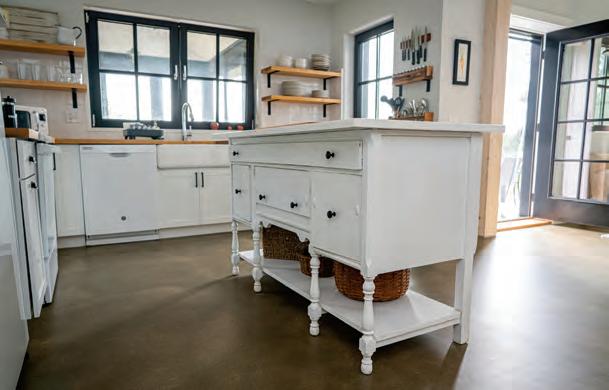
FEATURE • AT HOME: SISTERS BUILD GREEN 39 marthasvineyard. .com
1 2 3 4 5
Facing page: The Chilmark sister restored a historic homestead. This page, photos 1, 2, 3, 4: The West Tisbury sister's screen porch, repurposed wood for a lamp and a coat rack, and a cozy kitchen. Photo 5: The Chilmark sister's dining room has sweeping views of Quitsa Pond.
When I call the West Tisbury sister and her husband at their Easton, Connecticut home, she tells me about working as a nursery school teacher, raising kids with her husband in Rye, NY, and her passion for woodworking. “I am a totally self-taught amateur,” she laughs. Once the children were out of the house, she and her husband decided to move from Rye to more rural Easton and worked with Unity Homes to build their first green home. As we chat about the building process, I learn that Unity Homes offers five energy-efficient home designs. The family has the “Xyla” on the Island and the “Varm” in Connecticut. Unity delivers a home to


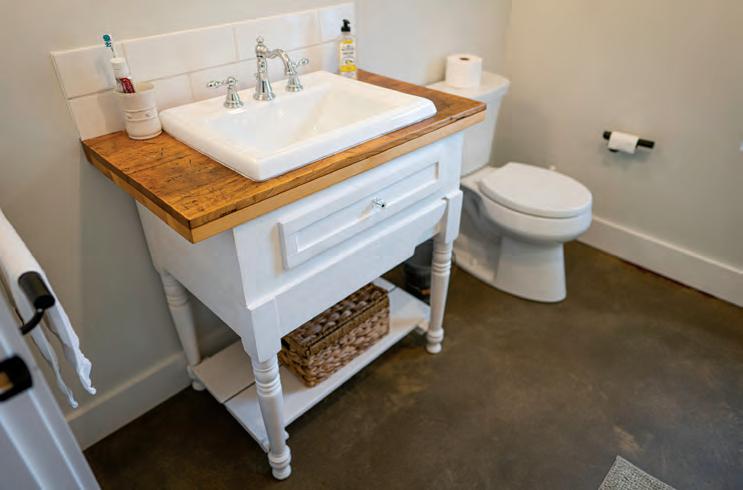

a site in several large components and then assembles it. Then the client hires a local team to finish the work. Inside finish materials are more often than not supplied by the company. “With this house, I really learned that you don’t need to spend a wad of money to make something beautiful,” she says. “I bought rugs from Etsy. I made the lamps, the kitchen island, and many tables.” She tells me that once they had the building permit, septic and well
installed, and the slab laid, the weather-tight shell was finished in two weeks. I nearly fall out of my chair and say, “Fastest house ever built on the Island.” Her sister’s house, on the other hand, took considerably longer. Of course, the project was more complex: retrofitting a house built around 1850 with 21st-century technology.
A month or so later, I meet the two sisters in the garden of the historic Chilmark home. They are chatting and
AT HOME: SISTERS BUILD GREEN • FEATURE 40 MARTHA’S VINEYARD /FALL-WINTER 2022-2023
I see the appeal of letting go of the details and having a net-zero home delivered as efficiently as she and her husband did.
For the West Tisbury modular house, the woodworking sister built many of the tables and the kitchen Island, and used furniture and fixtures she found on Etsy.



FEATURE • AT HOME: SISTERS BUILD GREEN
41 marthasvineyard. .com
The Chilmark sister restored a 170-year-old homestead, making a net-zero house.
laughing as they pull some late-season vegetables from the garden. “We saw this place and I was completely smitten,” the Chilmark sister says. I can see why: The old home has great bones and a spectacular view of Quitsa and Menemsha ponds. “My husband and I renovated an 1840’s brownstone in Brooklyn 16 years ago. I loved the process and, even then, tried to do everything as green as possible.” So a gut and a totally green renovation came naturally to her.
She walks me through the house and I can see she is clearly well-versed in the latest sustainable material lingo — from rock wool to mini-splits and permeable membranes. And the amazing thing is that while the house is fossil fuel-free and energy efficient, it feels like a wonderful old Island home with rooms that unfurl organically, one after the other. We walk deeper into the house. “My sister made that table,” she says. “And that side table.” She laughs, “Oh and
that table over there.”
We sit down on the home’s glorious new back porch overlooking Quitsa and the two sisters reflect on why green building is so important to them. “I am not saying that having a green home will solve the world’s problems,” the Chilmark sister says, “but not using fossil fuels at least doesn’t add to them.” The West Tisbury sister agrees and adds, “It is also healthier. I am currently being treated for cancer and, as a result, have become so aware of chemicals — particularly in furniture and home construction.” We talk about the volatile organic compounds (VOCs) in some building materials that can have adverse health effects, and about the importance of ventilation and air flow in a house.
In a later phone call, builder Mark Hurwitz echoed this. Insulating and ventilating the old house with modern green technology was one of the greatest challenges. “The great thing about the old house was that it had so much air in it that there was not much rot,” he said. “We could use so much of what was there.” To build the tightest house possible, Hurwitz and architect Patrick Lindsay enlisted the help of Marc Rosenbaum as an “an envelope consultant.” “We had to go through all kinds of gymnastics ventilation-wise,” Hurwitz said. “They didn’t want to blow foam insulation in, so we used rock wool in the walls and Gutex wood insulation on the roof.”
The West Tisbury sister tells me that with Unity, “We didn’t have to do any of the complex calculations that my sister did. It was all already figured out. And,” she laughs, “my husband and I had a different budget, timeline, and goals.”

The more I talk to the West Tisbury sister, the more I see the appeal of letting go of the details and having a net-zero home delivered as efficiently as she and her husband did: When we built our house, my husband and I struggled with so many variables — sourcing green materials, figuring out heating solutions. But my conversation with Mark Hurwitz reminds me of the

AT HOME: SISTERS BUILD GREEN • FEATURE 42 MARTHA’S VINEYARD /FALL-WINTER 2022-2023
The rooms, and the staircase, unfurl organically.
In Chilmark, original beams were preseved and have become a main feature.

FEATURE • AT HOME: SISTERS BUILD GREEN 43 marthasvineyard. .com
great value of renovating an old home. “Saving an old home is one of the greenest ways to build,” he said. “And you get to do things like have an old, beautiful curving stairway with lower handrails that wouldn’t meet today’s current code. The front staircase in that house is stunning. But doing something like this is certainly more of an effort and takes time and resources.”
Renovating an old home is also an extraordinarily collaborative process. The Chilmark sister was up for the challenge every step of the way. She drafted her vision of the home on yellow tracing paper. “She had an amazing vision for the project and was so informed about the available materials and technology,” Hurwitz said. Beyond working with engineers, the Chilmark
sister, Mark Hurwitz, and Patrick Lindsey worked with mason Mike Cassiani to move the chimney, which, according to Hurwitz, was a “magical act.” Brothers Gary and Greg Harcourt built cabinets and day beds. Plasterer James San Fillipo worked with the old lathe and plaster under the stairs and replastered the whole house. Outside, Indigo Farm helped to figure out how to restructure the landscape, rethinking and imagining the stone wall surround and parking. “The best thing about the house is that if you are driving by and look at it from the road, you don’t know anything was done. From the road, it’s an iconic landmark. And I think it will be good for another 150 years.”
Nine months later, I visit the Chilmark sister and her house again. The
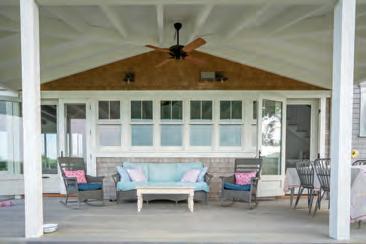
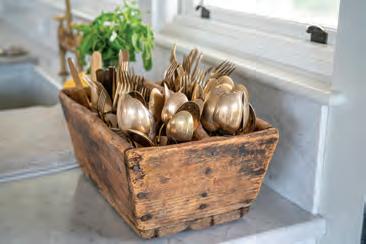


garden has grown in and is bursting with local native flora and fauna, but the visit is bittersweet. On June 10 of this year, the West Tisbury sister died of cancer. I say to the Chilmark sister that it feels cruel: The sisters and their families have finally achieved their shared goal — having green dream homes on the Island, but cannot now share them.
Editors’ note: The West Tisbury sister was a wife, a mother, a nursery school teacher, and a builder of furniture. She cared about her family and the planet. She had a great smile and bright eyes, and she will be missed.
Details from the Chilmark sister's house: a blend of new and old, and a terrific view of Quitsa from the porch and terrace.

AT HOME: SISTERS BUILD GREEN • FEATURE 44 MARTHA’S VINEYARD /FALL-WINTER 2022-2023
Room For Change:
RUGS
Ihave never liked wall-to-wall carpeting. But a night on the carpet of the Delhi airport sealed the deal. I landed in Delhi around 2 a.m., after customs had closed. My fellow passengers and I were ushered to a large, chairless, carpeted area guarded by several police
Why we think area rugs have it all over wall-to-wall.
 Story by Mollie Doyle
Story by Mollie Doyle
officers who told us we could “sleep” on the floor until customs re-opened. The wall-to-wall carpet had an assortment of crumbs, bugs (dead and alive), and stains (new and old) mashed into its weave. And it smelled awful. As I lay awake that night, I thought, “wall-to-wall carpeting is always
a bad idea, particularly for public spaces.” But even in the nicest homes and hotels, carpets can be problematic.
The American Lung Association, the National Center for Healthy Housing, the Environmental Working Group, and various scientists who have published
HEADLINE FOR STORY 45 marthasvineyard. .com
Haile Forté scouts a runway-like hallway. Three vintage Turkish "cicims" break up the distance.
PHOTO: MARY RENTSCHLER
broadly agree: Wall-to-wall carpet is not a healthy or sustainable option. Why? Carpet harbors bugs (hello dust mites!), mold, and it is often made with synthetic materials that can cause eye irritation, respiratory symptoms, and hormone disruption. Not to mention, the padding that is usually installed under wall-to-
wall carpet is made of foam, which often releases harmful volatile organic compounds (VOCs). This is why the EPA recommends that a newly carpeted area be well-ventilated for at least 72 hours after installation and that folks continue to use fans in the space for several weeks after. It leads us to think: If the off-gas-
sing from foam is so toxic, perhaps we shouldn’t be installing it at all.
The main issue with wall-to-wall carpeting is its permanence. You cannot pull it up, clean the floor underneath, or wash it. Nor can you get to the carpet padding, which aside from its likely toxicity (those VOCs), can trap moisture from spills. So no matter what kind of cleaning service you use, wall-to-wall eventually becomes a mold and dirt factory.
Eventually, carpeting needs to be replaced, which results in a lot of unnecessary trash. Once it is old or spoiled, carpeting is rarely reused, repurposed, or even repaired. According to the Carpet America Recovery Effort, in this year alone, Americans will throw out five billion pounds of carpet. To make matters worse, less than one percent of carpets are made with natural fibers — so it takes an estimated 40 years for these carpets to break down in a landfill, if they break down at all.
The great news is that there is a much better option out there: area rugs!
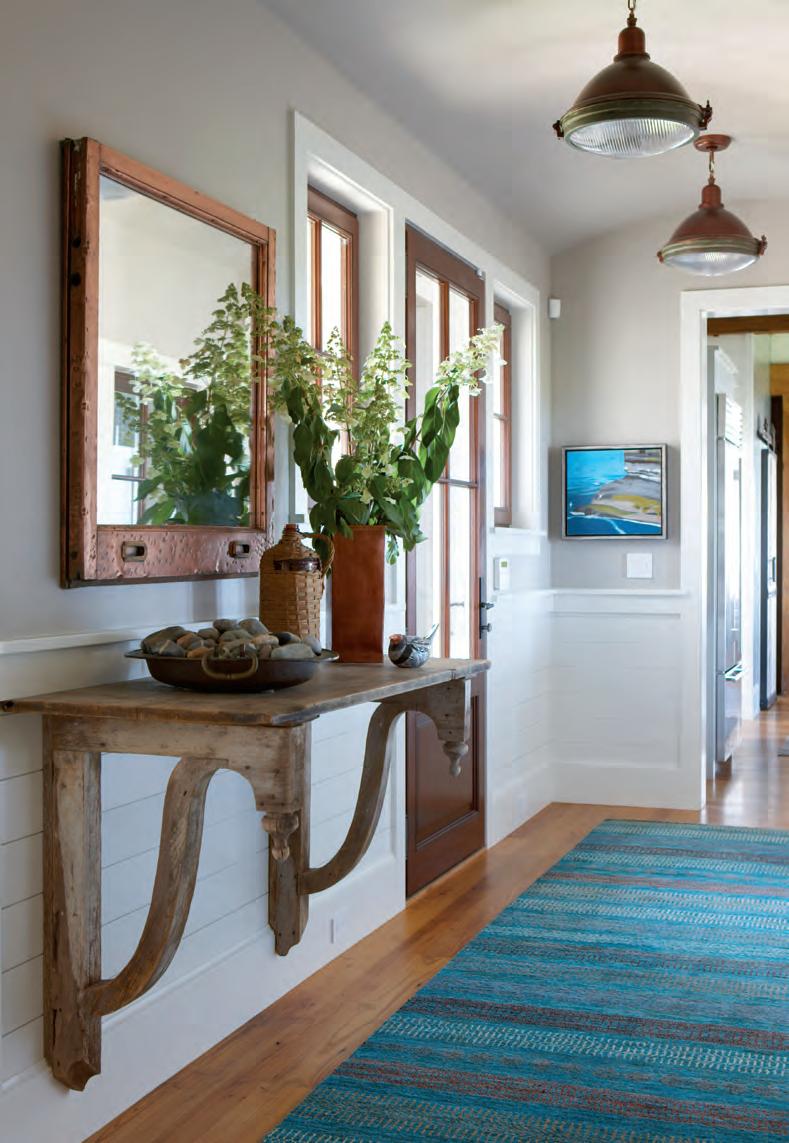
ROOM FOR CHANGE • RUGS 46 MARTHA’S VINEYARD /FALL-WINTER 2022-2023
I think area rugs are the most underappreciated, underutilized decorating tool in one’s house. They’re far easier to keep clean, and it’s much easier to find area rugs made with natural and recycled materials.
This runner is a tribal Afghan Village Rug woven by women who make them inside their homes.
PHOTO: MICHAEL PARTINO
Some Good eco Rugs
We turned to Treehugger’s rug round-up for 2022 for their eco picks.
Treehugger’s rug reviewer Starre Vartan gave Organic Weave top marks: “A wide range of options combined with an impressive list of third-party certifications makes this company our top overall choice for sustainable rugs,” she wrote.

For those on a budget, Vartan liked Hook & Loom: “The company makes 100% GOTS [Global Organic Textile Standard] certified organic cotton rugs or rugs made from eco-cotton, which uses donated textiles sorted by color that’s spun into new yarn — keeping cotton waste out of landfills. The wool rugs are made with undyed, natural wool that’s hand-woven with handbound edges, so there are no chemicals, no dyes, and no latex.”
Check out the rest of Treehugger’s picks at bit.ly/3ThJkDn.

RUGS • ROOM FOR CHANGE 47 marthasvineyard. .com
I looked in every city and town in Morocco to find my magical Berber rug. The colors are not the same from left to right because as the nomads traveled, they were using different berries to dye the wool. The rug changes according to the geography of their travels.
– Mary Rentschler
COURTESY
Rentschler takes her cherished Moroccan Berber rug out every Christmas.
MARY RENTSCHLER.
A vintage Turkish rug on top of Moroccan tile.
I think rugs are the most underappreciated, underutilized decorating tool in one’s house. They’re far easier to keep clean, and it’s much easier to find area rugs made with natural and recycled materials. Martha’s Vineyard-based interior designer Julie Robinson told me she loves natural fiber rugs, especially wool
Martha’s Vineyardbased interior designer Julie Robinson told me she loves natural fiber rugs, especially wool rugs: “You can clean them and they have the least amount of chemicals in them. Wool, cotton, jute. Those are my go-to materials.”
rugs are the starting place in the house,” Rentschler said. “I tell my clients rugs are the first layer of art in the house. The horizontal layer. Then you can have vertical art on the walls, then sculpture.”
If you’re ready to make the switch to area rugs, there are so many options for greening up your rug game.
rugs: “You can clean them and they have the least amount of chemicals in them. Wool, cotton, jute. Those are my go-to materials.”
Martha’s Vineyard-based interior designer Mary Rentschler points out that area rugs can also be a game-changer when it comes to design. “For me,

First, you can buy a vintage rug. Look for rugs made with natural fibers such as cotton, wool, and silk. If you find one you like, but it has holes or a little wear, there are amazing craftspeople who can fix these rugs. I use Edward Barsamian in New York City. In my 25 years of bringing rugs in for repair, only once has he said, “Mollie, this is beyond repair.” If all that’s required is a cleaning, you can do that yourself. About once a year, I throw our old flat weave rugs out on our deck, wash them with soap and a scrub brush, hose them down, let them dry, and they are good as new.
These days finding vintage rugs is easy. I have found some great ones on
ROOM FOR CHANGE • RUGS 48 MARTHA’S VINEYARD /FALL-WINTER 2022-2023
Area rugs can be a game-changer when it comes to design.
PHOTO: RANDI BAIRD
Etsy. For higher end vintage rugs, there are a zillion shops, including ABC Carpet and Home, Revival Rugs, The Vintage Rug Shop, 1stdibs, and Chairis. The best part about buying a vintage rug (other than the green act of reusing something) is that chances are, no one else will have the same one.
Mary Rentschler tells me that when she was 19, she went to Morocco and bought her favorite possession of her entire life. “When my grandmother wanted to give me a watch,” she said, “I asked if she could give me money to buy a rug instead. I looked in every city and town in Morocco to find my magical Berber rug. Finally, I found it. The colors are not the same from left to right because as the nomads traveled, they were using different berries to dye the wool. The rug changes according to the geography of their travels. I have had this rug in the front hall of all my college apart-
ments, really all the front halls in my life. Because it is now a bit threadbare, I only bring it out at Christmas.”
If vintage is not your bag, that’s cool. There are some fantastic companies making new, beautiful rugs with responsibly sourced materials. I reached out to a few local decorators for their picks. Scott Mullin of Studio MOS on the Vineyard told me he’s a huge fan of rugs from Berkshires-based Annie Selke. Selke makes indoor/outdoor rugs from recycled plastic bottles (52 million so far) as well as natural fiber rugs. He said the plastic actually feels great underfoot. “I have two in my home, one on our screened-in porch and one in our living room. And they are so easy to clean, you can just hose them down.” Mullin also likes the organic hemp and natural fiber rugs at Safavieh, Citizenry, and Jaipur Living.

As for washable wool rugs, Mullin said they don’t really hold up, and they

tend to roll at the edges. This said, I do love a washable 100% cotton rag rug and always have them in my kitchen. I buy them, use them until they begin to unravel, and then throw them in my compost where they decompose in a year or two.
Rentschler agrees with Mullin. “The technology [in modern day rugs] is amazing. And natural fiber rugs look fresh. But I like to incorporate color, maybe layer an older rug on a natural fiber rug. Modern is a combination of everything. I tell my clients to get the bones happening. Rugs are the bones. And then take your time, bring your house along with your life, accessorize as you go.”
I love this thought, that home decorating is an evolution, not an instant solution. When you take time with purchases for your home — buying things you love — they become heirlooms that will last and be passed down for generations. And there’s nothing greener than that.
RUGS • ROOM FOR CHANGE 49 marthasvineyard. .com
PHOTO: GILS JACOBS
Rentschler loves to use color in her designs.
WILD CAUGHT: Plenty of Fish in the Surrounding Sea
Story by Catherine Walthers
“My grandfather built this boat in the mid to late ’30s,” says Denny Jason, Jr., a second-generation fisherman, standing next to the Little Lady, which motors from Menemsha in mornings in search of fluke. “He started fishing in Menemsha Bight and fell in love with this Island and the rest is history. The boat builders did not expect her to last more than 30 years and here she is at 94. I’ve spent a lot of my life just taking care of this boat.” The Little Lady has manual steering and a net that drops over the side that catches the fluke and other fish. “It’s one of the last single, side-rig galleys, as far as I know.”
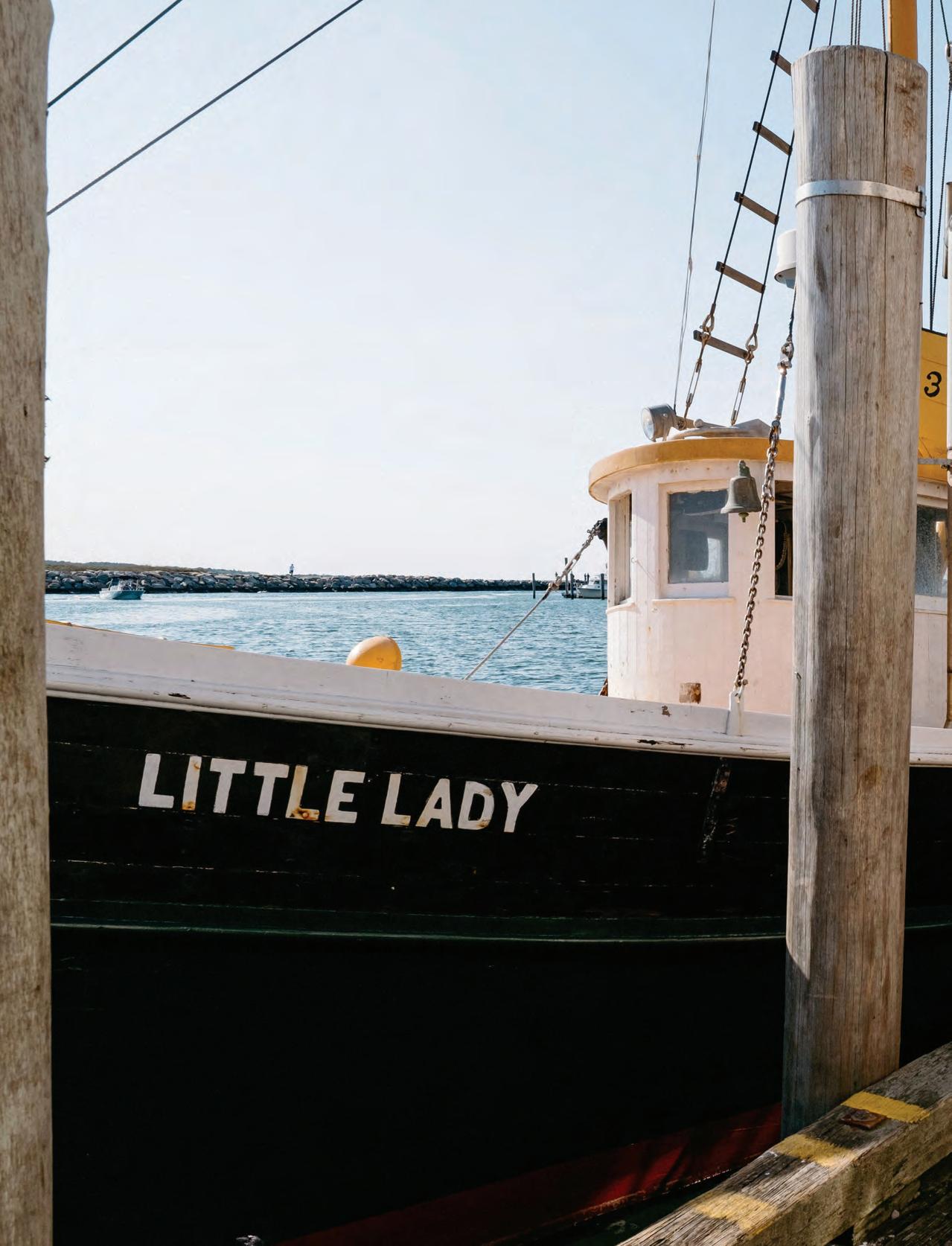
“You’re kind of born into it,” Jason, 36 years old, says about fishing and following in his father and grandfather’s steps. He now spends eight to ten hours on a trip, four to five days a week, and is one of the Island’s main suppliers of fluke, a type of flounder locals refer to as Vineyard sole. Fluke can be found in Vineyard Sound and off Aquinnah.
Continued on page 52
WILD CAUGHT • FEATURE 50 MARTHA’S VINEYARD /FALL-WINTER 2022-2023
PHOTO: SHENY LEON
The 94-year old Little Lady wasn't supposed to make it beyond 30. But she continues to help Denny Jason, Jr., bring in his catch, one of up to 100 Vineyard working fishing boats.

FEATURE • WILD CAUGHT 51 marthasvineyard. .com
Though the ocean's bounty has limits, and some species are in decline, Vineyard fishermen are keen to put these catches on our plates.
“You can’t beat it,” he says. “It’s one of the cleanest fishes you can eat. I’ll put it right up there with anything.”

Jason’s antique boat is one of 75 to 100 working fishing boats currently based on Martha’s Vineyard. Fluke is one of 11 fish species, along with nine types of shellfish that local fishermen catch from the waters surrounding Martha’s Vineyard. Like Jason, a number of them still drop fish off daily to fish markets and at the Menemsha docks.
If you want to buy local, any of these fish is a good idea, says Shelley Edmundson, a marine biologist and executive
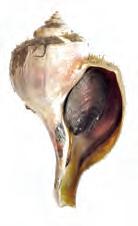
FISH THE SEASON

director of the Martha’s Vineyard Fishermen’s Preservation Trust, which works to support the local fishermen who bring in this wild catch and to educate chefs and consumers about what’s around us. “Focusing on what we have in our waters that is plentiful and overabundant is great.”


This Vineyard catch ends up at fish markets for sale or with wholesalers. Some of it moves off-Island. The Fishermen’s Trust purchased the former Menemsha Fish House next to Larsen’s Market not long ago as a way to sell just Vineyard fish and shellfish wholesale to local restaurants, food trucks, and caterers.

WILD CAUGHT • FEATURE 52 MARTHA’S VINEYARD /FALL-WINTER 2022-2023
Jason brings in the catch.
PHOTOS: SHENY LEON
JANUARY FEBRUARY MARCH APRIL MAY JUNE
WHELK (CONCH)
SCUP
NORTHERN BAY SCALLOP
WINTER FLOUNDER
Deliveries are listed on a blackboard each day, which recently included 32 local eateries. With each delivery, restaurants get an information card listing the local boat or boats that brought in the catch. The day I toured the Menemsha facility, Beau Begin, who operates a mobile raw bar he calls the “Clambulance,” stopped by to pick up a bag of Vineyard oysters for an upcoming event. With a state grant, the Fishermen’s Trust recently completed a 22-page ”Seasonal Seafood of Martha’s Vineyard” guide for chefs, especially those new to the Island, including characteristics, recommended preparations, and nutritional information for each species.
Locally caught fish includes some familiar species like lobster, striped bass, bluefish, fluke, oysters, scallops, and clams. Some fish on the list are not as recognizable, or might be overlooked when we are used to buying our favorites. Tautog is one species I had never tried. Yet the first week of September, there it was at Larsen’s Market: pristine, pinkish-white fillets filling the tub. Owner Betsy Larsen and her sister Kristine at the Market both say they love tautog, which is available seasonally in the fall.
Some species are relative newcomers — a result of warming seas — and others are on the decline. Black sea bass, a mild delicious white fish like fluke, is now one of our most common Vineyard fish, growing steadily in popularity. Ten years ago they were not as common. As waters have warmed, they have gradually moved in and found a home here. Fishermen are also catching more mahi mahi, and consumers will occasionally see it in local fish markets.



Scup have been a constant in waters here. The Narragansett tribe called them mishscuppaug, from which the names scup and porgy are derived. Yet frustratingly to some, it’s rarely sold or cooked in restaurants. A relatively small silvery fish with sweet, tender, and mild white flesh, scup used to be a local staple. For decades, especially in the ’20s and ’30s, fishermen caught scup by “trap fishing,” a system of wooden stakes driven into the ocean

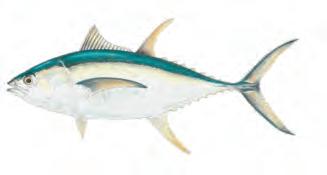

YEAR ROUND BOUNTY
Seasonal catches
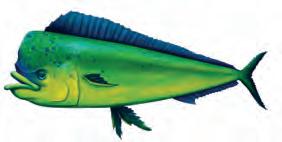


Shellfish and crustaceans
* American Lobster
* Atlantic sea scallop
* Eastern oyster
* Hardshell clam

* Jonah crab
* Softshell clam
* Squid
on
below.
floor along the North Shore that held nets and trapped so many fish they were heavily exported as well. But scup fell out of favor, mostly because of the small size of the fish and proportional bones. Since it is still abundant here, many would like to see this sustainable species make a comeback with consumers. Meanwhile, you can fish for it on your own recreationally or head out on the Skipper, a charter out of Oak Bluffs that takes 20 to 30 people. Fishermen sometimes catch and sell scup as bait.
FEATURE • WILD CAUGHT 53 marthasvineyard. .com
BLUEFISH MONKFISH TRIGGER FISH TAUTOG JULY AUGUST SEPT. OCTOBER NOVEMBER DECEMBER YELOWFIN TUNA FLUKE
BASS
featured
chart
FISH IMAGES COURTESY THE M.V. FISHERMEN'S PRESERVATION TRUST BLACK SEA
BASS
STRIPED
BLUEFIN TUNA MAHI MAHI
We also don’t typically find whelk, also known as conch, in local markets, even though it is the largest fishery on the Island and one of the top 10 fish brought in. In 2020, some 290,000 pounds of conch were landed here. Next in landings were local oysters at 175,000 pounds that same year; 121,000 pounds of black sea bass; followed by 97,000 pounds of lobster. (These state totals don’t include fish under federal permits or sea scallop.) Most of the conch catch goes off-Island to New Bedford and New York processing warehouses for distribution mostly to Asia, where it is popular. One Island chef, Jamaican-born Deon Thomas, serves conch at Deon’s, his restaurant, and wrote Deon’s Island Conch Cookery hoping to introduce Vineyard consumers to conch delicacies.
The once thriving lobster fishery on the Island is now mostly concentrated in the colder waters off Maine and Canada. Local fishermen here still bring lobsters in, but far fewer than in past
decades, and their fishing areas are farther offshore.
“The fishery has changed and you have to adapt,” says Tubby Medeiros, a seventh-generation Island fisherman whose ancestors emigrated from the Azores. Medeiros tends not only to his lobster traps, but to about 120 traps for scup, sea bass, and conch. He especially enjoys taking his son (now also a Tisbury police officer) on the boat as a sternman. “He’s awesome on the deck of a boat. It’s a heartfelt day when I go out with him.”
Medeiros says he feels blessed to have been able to fish for the past 30 years. He builds all his own lobster traps and gear. “After 12 to 14 hours on the water, you’re beat. It’s a hard way to make a living, but it’s a good feeling to be able to supply the Island with quality fish and lobster.”
The other Vineyard shellfish — the oysters, bay scallops, and clams — seem to be thriving, a true success story for the island. Oyster farming here, now a boon for fishermen and consumers,

WILD CAUGHT • FEATURE 54 MARTHA’S VINEYARD /FALL-WINTER 2022-2023
“Sustainably fished, the ocean can provide food for years to come. Historically, the fish industry has been a huge industry here, providing food and commerce and income for families. It’s really important to keep it alive because once it stops, it just won’t come back.”
–John Keene, president, Martha’s Vineyard Fishermen’s Preservation Trust
PHOTO: SHENY LEON
largely started in 1998. That was the year the Martha’s Vineyard Shellfish Group, under biologist Rick Karney, got a federal grant to provide technical assistance to local fishermen to initiate approximately 12 aquaculture farms in Katama Bay. The Vineyard now has 19 aquaculture ventures, including in Oak Bluffs, Tisbury, and Chilmark.
The maintenance of the bay scallop fishery here, a local favorite and delicacy available in late fall/winter, is supported by the MV Shellfish Group run by marine biologist Emma GreenBeach and crew. Working from local hatcheries, the organization augments the wild catch by adding oyster, clam, and bay scallop seed to Island waters in all six towns. In 2019, they grew and
SEA SCALLOPS with Parsnip Puree and Herbs

Serves 2
Pristine sea scallops arrive at Vineyard fish docks daily, caught by local fishermen. The quality can’t be beat. The cooking times can’t be beat either — about 2 minutes a side. In this recipe from Catherine Walthers, scallops are paired with an easy lemon herb sauce that cuts the richness of the scallops. You can vary this by substituting pureed squash for the parsnip.
released 13.5 million baby quahogs, 27.5 million baby scallops, and 12.5 million oyster seed. That same year they also released more than 146 million scallop eggs to supplement the wild populations. Without this program, started nearly 50 years ago, the Vineyard might be like many other coastal areas on the East Coast without bay scallops due to environmental degradation. The landings of bay scallops have decreased over the past few years and that decline in the supply has meant prices climbed.

The Shellfish Group also monitors the entire ecosystem, working on eelgrass and oyster habitat restoration, and recycling shells from restaurants in the process.
If there’s a local resource people should consume, says Edmundson, it’s clams. Available year-round, they rarely sell
Ingredients
6-8 sea scallops or more depending on appetite
3-4 parsnips peeled and diced, about 2 cups
2 Tbsp. butter, divided 1/4 cup half-and-half
O live oil
Salt and pepper
Lemon Herb Sauce
2 Tbsp. fresh basil, chopped finely
2 Tbsp. fresh parsley leaves. chopped finely
6 Tbsp. extra virgin olive oil
1 Tbsp. shallot, finely minced 1/2 lemon (about 2 tablespoons)
Salt and fresh pepper
1. Remove the muscle from the scallops and rinse well. Dry on a paper towel and set aside in the fridge until ready to cook.
2. Place the diced parsnip in a saucepan of boiling water and cook until tender, about 25-30 minutes. Drain. Puree in the food processor with 1 tablespoon of butter and the half-andhalf. Season with salt and pepper and set aside in a bowl.
3. Make the herb sauce by combining the basil, parsley, olive oil, shallot, and salt and pepper. Just before serving, add the lemon juice (to keep sauce bright green).
4 To cook the scallops, use a cast-iron skillet or any skillet with a thick bottom. Heat on medium-high. Add the remaining tablespooon of butter and a bit of olive oil and sear the scallops on one side until golden, about 2 minutes. Season with salt and pepper. Flip and sear another 1 to 2 minutes longer.
5 To plate, smear reheated parsnips on the plate. Place seared scallops on top and spoon the sauce alongside or in dollops on the plate. Enjoy!
Recipe from Catherine Walthers
FEATURE • WILD CAUGHT 55 marthasvineyard. .com
PHOTO: RANDI BAIRD
out at local markets, especially the medium sized cherrystones and quahogs or chowder clams, not as popular as the smallest littleneck clams. “We have a lot of clams on this Island that’s thanks to Emma’s group and the hardworking fishermen who harvest them,” says Edmundson. More than 71,000 pounds of clams were harvested in 2021.
Fewer fishermen, fewer rights
The fleet on Martha’s Vineyard is considerably smaller than in past decades, thanks to some major consolidation affecting us locally. Those close to the industry say that if we want to keep the Island’s fishing heritage alive, they need to actively work at it.
“We’re at a place where we’ve lost a lot of our fishing rights to fish our waters,” says Wes Brighton, who fishes for sea scallops, lobster, Jonah crab, and squid. Decades past, fishermen could apply for permits for free, but those permits got privatized over time. Some fishermen took this opportunity to sell their permits and retire. But somewhat like consolidation in other food industries, larger corporations — even venture capitalists — started investing, buying up permits, and monopolizing the industry, fish by fish. Permit prices, depending on the fishery, can now reach from hundreds of thousands of dollars into the millions. In the process, Brighton says, smaller fishing communities like that on Martha’s Vineyard, began to lose access and to face daunting, if not prohibitive start-up costs as well as lost waterfront and infrastructure.
Getting clear on what’s sustainable Fishing in Massachusetts, including the Vineyard, is regulated and managed by a number of state and federal agencies, including the MA Division of Marine Fisheries and the National Oceanic and Atmospheric Administration (NOAA). But Edmundson says consumers sometimes get conflicting information about which fish to consume and which to avoid.
Consider the striped bass fishery here as an example. The highly respected Monterey Bay Aquarium’s Seafood Watch Program puts striped bass in its “avoid” column because of concerns about overfishing. Commercial striped bass fishermen in this state, however, have been following strict guidelines for years, which have helped successfully rebuild stocks. Current restrictions remain, including a daily limit of 15 fish, at least 34 inches long, and fishing only two days a week. When the quota for striped bass is met, the striped bass season ends.
“Sustainable seafood is a very hard thing to define [as] there are so many different viewpoints,” Edmundson explains. “What our fishermen are landing locally are carefully regulated by state and federal agencies. We’re not defining it; we’re supporting their rules. You can’t take one source to define what something is sustainable or not. You’re looking at a smaller community of fishermen. They’re doing things at a different scale. By the nature of our smaller harbors we can’t support large-scaled industrialized fishing business, so that makes choosing locally caught fish already more sustainable.” Edmundson adds she does not want to tell people how to live their lives or what fish to eat or not eat but “it’s really important to understand fishing seasons,” she says. “If more people had that as a tool in their toolkit, it would help us all make more sustainable choices when we got to the fish market.”
“There were way more fishermen,” says Brighton, referring to the era before these changes occurred, along with burgeoning regulations, and industry management. “There were probably 12 draggers out of Menemsha and a lot of other draggers around the Island. There was just a lot more fishing.”
In an effort to intervene, Brighton and others formed the non-profit Fishermen’s Trust in 2011 to look for ways to help independent fishermen and the next generation compete. The group got active in 2014. One way is to purchase permits when they become available through Trust fundraising. “We purchase them at market rate, similar to Affordable Housing Trust, then we work to finance the asset back to the fisherman,” Brighton explains. They’ve also been able to purchase sea scallop quotas through donations and investor help. Those will be kept in perpetuity and are being leased to Vineyard fishermen at affordable rates, Brighton says.
“There’s no shortage of challenges,” he laments. “It’s not easy to compete against well-funded large corporations. It’s crucial to maintain those assets for our community. We are surrounded by water and we have the opportunity and privilege to feed ourselves with our own natural resources and to do so sustainably. It strengthens the community and the families that live inside that community.”
The Fishermen’s Trust stepped up big time during the pandemic to help local fishermen who had fewer places to sell their catch when restaurants closed. Trust President John Keene recounts that they got a grant to purchase about 40,000 pounds of black sea bass and 2,500 pounds of scup from Island fishermen. That was turned into 144,00 meals of fish chowder and stew then distributed to Island food pantries, the Greater Boston Food Bank, and seniors’ facilities. “By getting this grant, we were able to buy a lot of sea bass, give the fishermen a good price, and extend their season into the fall,” says Keene, a Chilmark resident and owner of John Keene Excavation. “That was huge.”
WILD CAUGHT • FEATURE 56 MARTHA’S VINEYARD /FALL-WINTER 2022-2023
“We are surrounded by water and we have the opportunity and privilege to feed ourselves with our own natural resources and to do so sustainably. It strengthens the community and the families that live inside that community.”
–Wes Brighton, Vineyard fisherman
The Trust bought the former Menemsha Fish House in January of 2021 and created a The MV Seafood Collaborative, a wholesale facility, to move what our local fleet catches in waters around the Island or harvests here. With a grant from the MV Savings Bank, the Trust supplied that facility with an ice machine capable of producing five tons of ice a day. Boats can now unload fish and stock up with ice for the trip the next day, and all catches can be immediately iced down when they get to the dock. Previously, large amounts of ice like this, which helps improve the quality of caught fish, were not available in Menemsha.
“To have a place that you know if you go out and come back in to, and you know you’re going to be able to sell your catch … Without being able to sell your fish, you can catch all the fish in the world — we could supply and help people with all these permits — but if there’s no markets to buy the seafood, it’s all irrelevant,” explains Keene.
Because they are non-profit, Keene said they walk a fine line between helping the fishing community and not harming other for-profit businesses, such as fish markets, which also buy wholesale for distribution to restaurants. “It’s really tricky for us,” Keene says. Looking toward the future, both Keene and Edmundson say they are encouraged by younger residents — still mostly men — who can uphold the Island’s fishing tradition. “I feel really optimistic,” Edmundson says. “We have a strong group of younger fishermen coming up who are interested and on the edge of taking the baton over. It gives me a lot of hope for the future to see this kind of progression happening. With older fishermen ready to retire, we have to be proactive with loan structures and programs now to help bridge the financial gap when it is time.” She adds, “A lot of younger fishermen … they see the big picture and they want to be part of the solution. They want to make sure they’re doing things right.” Nick Wilbur is one of these young fishermen trying to make it all work. He fishes for lobster,
FLUKE Fish Tacos

Serves 4
Fluke is a popular, locally sourced fish. It’s a type of flounder, but locals here often label it as Vineyard Sole. You can use fluke in recipes that call for sole. It’s a favorite of mine and perfect for tacos. All the toppings can be made ahead of time, earlier in the day, or a few hours ahead. Just before serving, cook the fish and heat the tortillas.
INGREDIENTS
3 to 4 pieces of fluke

1 egg
1/4 cup flour
2 cups panko bread crumbs
1 package corn tortillas
Ingredients for toppings, see below
1. To prep and cook the fish. Slice the fish in half lengthwise to make smaller fillet pieces (3- to 4-inch long pieces). Cut any long pieces in half. Season both sides with salt and pepper. Have 3 bowls ready with flour, egg, and panko bread crumbs seasoned with the spices. Dip each fillet piece in flour first, then egg, and finally press into the bread crumbs on each side. Put in the refrigerator until ready to cook.
2. Make the toppings, set aside in bowls that will go on the table.
3. Heat a heavy skillet, add a bit of olive oil and butter, and cook the fish until golden on each side, approximately 3 or 4 minutes per side (though this can change depending on thickness). The amount of oil/butter depends on size of pan – but it should be enough to get crust golden. While fish is cooking, heat the corn tortillas according to package instructions.
4. Place everything on the table — the bowls of toppings, fish on a platter, and tortillas in a basket so everyone can help themselves.
Fresh salsa
Combine chopped fresh tomatoes, seeds squeezed out, (Maine Backyard brand are good winter tomatoes) with 1 tablespoon or so finely chopped red onion and red pepper, some chopped cilantro, a minced garlic clove, olive oil, and squeeze of a lime. Taste and adjust.
Cilantro Lime Sauce
In a food processor, add about a cup of Hellman’s mayo with a good handful of chopped cilantro (about half a bunch), pinch of salt, and squeeze of 1/2 or 1 lime, depending on juiciness. Process until smooth. Taste and adjust.
Slaw
Combine thinly sliced green cabbage, maybe some red for color, and a grated carrot.
57 marthasvineyard. .com
Recipe from Catherine Walthers
PHOTO: RANDI BAIRD
PAN-SEARED TAUTOG
with Salsa Verde and Roasted Fingerlings
Tautog is a beautiful white fish seasonally available around Martha’s Vineyard starting in September and continuing through October, possibly into November. Get out of your fish rut by trying a few new sustainable species. In this recipe, provided by Vanessa Seder, tautog is paired with roasted potatoes and a wonderful herb sauce. Bonus: This sauce goes nicely with other pan-seared fish varieties. Seder is the author of Eat Cool and Secret Sauces.
INGREDIENTS
For the roasted
fingerling potatoes:
1 pound fingerling potatoes
3 sprigs fresh rosemary
4 sprigs fresh thyme
3 tblsp extra virgin olive oil
Sea salt
Freshly ground black pepper
For the tautog:
4 tautog fillets
Sea salt
Freshly ground black pepper
3 tblsps extra virgin olive oil
For the salsa verde:
2 medium c loves garlic
1 tsp sea salt
1 tsp orange zest
1 tsp lemon zest
2 tblsps fresh lemon juice
1/2 cup extra virgin olive oil
1/2 cup loosely packed
chopped fresh
flat-leaf parsley
1/2 cup losely packed
chopped fresh basil
Freshly ground black pepper
conch, sea bass, triggerfish, and bonito from his vessel, Little Feat out of Menemsha. “As far as the future goes, one of my biggest worries is ocean acidification. That freaks me out in terms of the future for my daughter and son. What’s the ocean going to be like? I try to be as good of a steward as I can.”
Fishing’s future
Any consideration of fishing has to include climate change and how we are going to adapt to it. Those focused on the future of fishing on the Island, including Edmundson, who participated in the recently released Climate Action Plan (dubbed The Vineyard Way), are keeping that sector of the economy front and center.
DIRECTIONS
For the fingerling potatoes:

1. Preheat the oven to 425 degrees.
2. Halve the potatoes and place on a parchment-lined baking sheet. Add the sprigs of rosemary, thyme, olive oil, salt and pepper, and toss to combine. Spread out on the baking sheet and place in the oven.
3. Roast the potatoes, tossing once or twice during cooking, until the potatoes are cooked through and golden brown in parts, about 45 minutes.
For the salsa verde:
1. Meanwhile, place the garlic cloves on a cutting board. Using the side of a chef’s knife, press to crush the garlic. Add the salt to the garlic and continue to chop and press with the side of the knife until a paste forms.
2. Transfer the salted garlic to a bowl along with the orange zest, lemon zest, lemon juice, and olive oil. Stir in the parsley and basil, and season to taste with pepper. Set aside.
For the tautog:
1. Remove the fish from the refrigerator and transfer plate lined with paper towel. Let stand for 15 minutes at room temperature. Before frying, make sure the surface of the fish is very dry, using paper towels to wipe up any additional moisture. Season both sides of the fish with salt and pepper.
2. Heat a large 12-inch cast-iron or non-stick skillet over medium-high heat. Add the oil and heat until it shimmers.
3. Carefully add the tautog fish to the skillet, presentation side down. Lightly press down on the fish to create a nice sear, do not move the fish. Cook until golden brown on the surface, 4 to 5 minutes. Use a fish spatula to carefully flip the fish and continue to cook 2 to 3 minutes until just opaque.

WILD CAUGHT • FEATURE 58 MARTHA’S VINEYARD /FALL-WINTER 2022-2023
PHOTO: RANDI BAIRD
Serves 4
“How do we help local foragers, farmers, and fishers thrive?” the report starts out, outlining its aims. “Martha’s Vineyard is historically a foraging, fishing, and farming community. In a time of climate change, when we need to rely on food grown as close to home as possible, how can we ensure this is part of our future? How can we be better prepared for extreme events?”
One of The Vineyard Way’s goals is to increase aquaculture production by 30 percent by 2030. To do this, the report recommends developing a business plan to analyze the potential of building an onIsland shellfish processing facility, as well as undertaking an Island-wide analysis to identify new areas for additional shellfish/ seaweed production.
To achieve increasing local purchasing of locally harvested seafood by 2030, the recommended actions include establishing a labeling and marketing campaign for local seafood, and working to increase institutional purchasing of local seafood in the schools and at the MV Hospital.
A final goal of the plan is to ensure that by 3032, commercial fishing and aquaculture are safeguarded as sustainable livelihood options. The report proposes working with towns to ensure that waterfront space is prioritized and preserved to support commercial fishing; developing fish clubs or mentorships to increase interest for the next generation of fishers; expanding collaboration between fishermen and scientists to understand projected changes to future fisheries; maintaining and increasing permits for current species through buyouts and loan program partnership; and developing communication between fishermen and regulators to help both parties identify and adapt to changing climate conditions.
“Sustainably fished, the ocean can provide food for years to come,” says Keene. “Historically, the fish industry has been a huge industry here providing food and commerce and income for families. It’s really important to keep it alive because once it stops, it just won’t come back.”

Sign up for The Bluedot Kitchen Newsletter, launching soon. bluedotliving. com/newsletter
 PHOTO: SHENY LEON
PHOTO: SHENY LEON
Serves: 2 to 4
Local clams dug from Island water sources are available year-round. Littlenecks are the smallest clams; next in size are cherrystones, and then quahogs or chowder clams. It helps local fishermen to buy all three sizes! This recipe by cookbook author Vanessa Seder is great as a first course, appetizer with drinks, or a simple dinner. In addition to developing recipes for Maine seafood producers, Vanessa is the author of Eat Cool and Secret Sauces.
INGREDIENTS
24 littleneck clams, approximately 2 to 4 pounds
2 Tbsp. extra virgin olive oil
1 shallot, peeled and finely chopped
3 c loves garlic, peeled and finely chopped
¼ cup dr y white wine
2 Tbsp. fresh flat-leaf parsley, finely chopped
2 Tbsp. fresh oregano leaves, inely chopped
1 Tbsp. fresh thyme leaves, chopped
1 Tbsp. capers in brine, drained but not rinsed
¼ cup cold unsalted butter, cut into small pieces
Freshly ground black pepper
Grilled sliced sourdough bread, for serving
1. Scrub and rinse the clams. Keep refrigerated until ready to use.
2. Cover a serving platter in rock salt and set aside. The salt prevents the clams from shifting on the platter when served.
3. In a small saucepan, heat the olive oil over medium heat. Add the shallot and garlic and cook, stirring constantly until fragrant and the shallot has become translucent, about 2 minutes. Add the wine and cook until the alcohol subsides and is reduced by half, 2 to 4 minutes.
4. Remove the saucepan from the heat. Stir in the parsley, oregano, thyme, and capers. Whisk in the butter a bit at a
GRILLED LITTLENECK CLAMS in an Herb, Caper, and Butter Sauce

time until just melted and incorporated, and season to taste with pepper. Keep the sauce warm until ready to serve.
5. Preheat a grill or grill pan over medium heat. Place the clams directly on the grill. Cover and cook the clams without
turning them. As soon as the clams pop open, about 8 to 10 minutes, transfer them carefully with tongs to the platter with the rock salt. Use the tongs to pry off the top shells. Spoon some of the sauce over each clam and serve with the grilled bread. Serve immediately.
WILD CAUGHT • FEATURE 60 MARTHA’S VINEYARD /FALL-WINTER 2022-2023
PHOTO: RANDI BAIRD
Continued from page 25
yard 40 years ago, but today they are only found along the South Shore due to habitat loss and the proliferation of roads where they are killed by vehicles. These snakes are harmless to humans and help us by eating many mice that carry ticks. While some may not see snakes and bats as charismatic species, they are part of the web of life that supports all species. These proactive projects will reduce bat and snake mortality associated with the development boom on the Island.
If you would like to support our work conserving the Island’s wildlife, visit our website to make a donation or learn more: bit.ly/BIODIV-DONATE.
To: Blue Dot Living
From: M.V. Shellfish Group
Subject: Bivalvify!
In addition to growing tens of millions of bay scallop, quahog, and oyster seed for public resource enhancement around the Island since 1976, the Martha’s Vineyard Shellfish Group has been increasing habitat restoration efforts in the last several years. Without proper habitat, the millions of juvenile shellfish we produce have a much reduced rate of survival. Since 2011, MVSG has operated a shell recycling program, the Shell Recovery Partnership, which diverts shells from the waste stream to oyster habitat restoration in Edgartown and Tisbury Great Pond where they belong. For the past four years we have been learning how to propagate and replant
eelgrass in the ponds. Eelgrass is in steep decline worldwide, mostly due to the impacts of excess nutrients (nitrogen) and warming oceans. Eelgrass is a critically important species in many of our coastal ponds and is essential to successful bay scallop restoration. The intricate rhizomatic root system and dense canopy of healthy eelgrass meadows help to protect against coastal erosion, increase water clarity, sequester nitrogen and carbon, and provide nursery habitat for a multitude of other marine species, in addition to bay scallops.
As we increase our eelgrass restoration efforts, what we need the most is scuba diving gear and a hand-held GPS. With these field tools, we plant eelgrass in the ponds and accurately track our progress! For more information about how we bivalvify the Vineyard, visit mvshellfishgroup.org.

To: Blue Dot Living
From: Natural Neighbors
Subject: Subject: 209 partners!
The Natural Neighbors Program launched in June of 2021, advising and encouraging individuals and neighborhoods across the Island to plant local genotype native plants and add features such as water and shelter that benefit plants, pollinators, and wildlife in their yards.
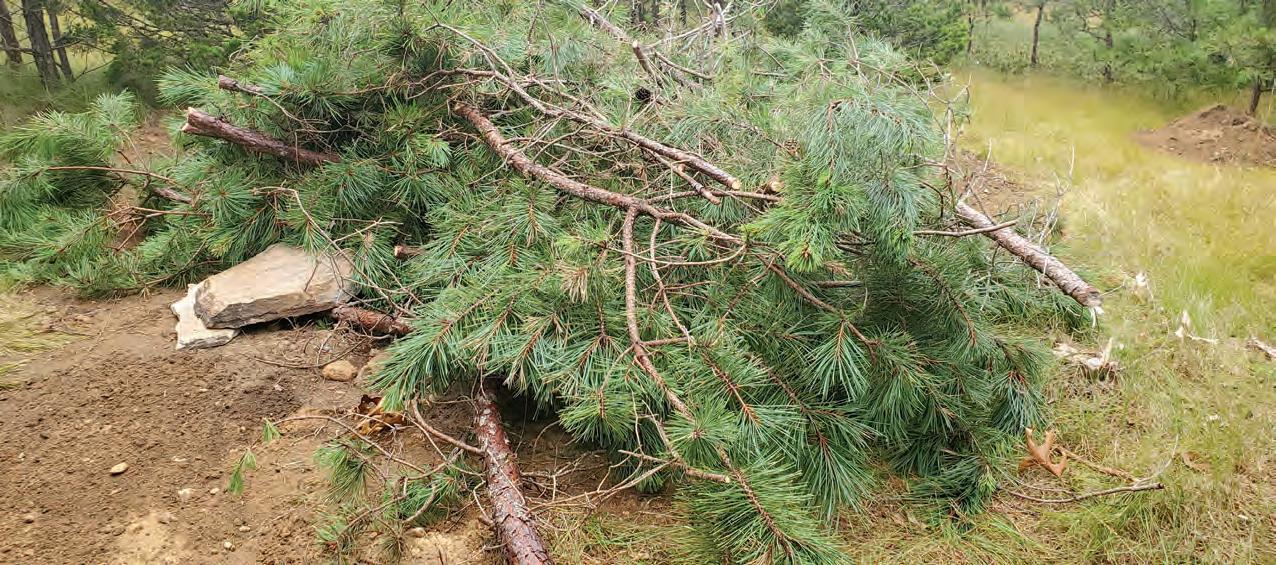
With a start-up grant through the Martha’s Vineyard Vision Fellowship, our goal was to recruit 125 participants within two years. A year and a half into the program we have 209 Natural Neighbors! We partnered with Polly Hill Arboretum to design and distribute native plant kits, selling 54 kits in the first year and 67 in the second year. All plants in the kits are ecologically important, aesthetically appealing, and in need of wider distribution. While planting native plants is a primary component of the program, it is equally important to remove invasive non-native plants, but many participants report feeling overwhelmed by their invasive plant problem. To build capacity and community, we are developing a volunteer-based labor cooperative, the Invasive Plant Brigade to begin in 2023.
We have made significant progress engaging with Island community members and empowering them to make small but meaningful changes to promote biodiversity. We welcome new Natural Neighbors to the program in January 2023 and donations to support the program beyond May 2023. To sign up or make a donation, visit bit.ly/Natural-Neighbors.
GIVE BETTER • NONPROFITS WISHLISTS 61 marthasvineyard. .com
· · ·
· · ·
M.V. Shellfish Group helps replant eelgrass in ponds.
A BiodiversityWorks snake hibernaculum.
Continued from page 33
very intelligent and in tune with our natural resources.”
Camille began attending native language lessons in Quincy — reclaiming the language her ancestors spoke and were prosecuted for speaking. Five years later at Weetumuw Katnuhtôhtâkamuq (The Weetumuw School), she began teaching elders to reconnect with their lost roots. For Camille, it’s been sacred and eye-opening, she says, “a journey that has kept me grounded in place.”
TEK in climate science
After centuries of ignoring and underestimating the role of TEK, the western scientific community is realizing its value. Since the United Nations Conference on Environment and Development in 1992, TEK has garnered global attention and has increasingly been sought for emerging models of ecosystem management, conservation biology, and ecological restoration. TEK was incorporated formally into Article 8(j) of the United Nations Convention of Biological Diversity, which states that the knowledge and practices of Indigenous and local communities are relevant for the conservation and sustainable use of biodiversity and should be respected, preserved, and applied. Accordingly, in 2007, the United Nations University Institute for the Advanced Study of Sustainability launched a “Traditional Knowledge Initiative,” which studied contemporary TEK practices for resource use, waste management, and adaptation to climate change. Advocates for the recognition and implementation of TEK include the Intergovernmental Panel on Climate Change, the Paris Agreement, the Convention on Biological Diversity, and the UN Declaration on the Rights of Indigenous Peoples.
“A lot of Native people today are wanting to share this type of knowledge because it worked,” Linda Coombs says. “And it will work.” If TEK is ignored, she says, “the Earth isn’t going to last. There’s nothing more to say about it.”
A demand to right wrongs
Given the history of colonization, many Indigenous activists worry how TEK
might be appropriated and exploited by the western scientific community. As Douglas Nakashima and Marie Roué explain in Indigenous Knowledge, Peoples and Sustainable Practices, “Through this process, knowledge corresponding with the paradigm of Western science is extracted, and the rest is rejected. While this cognitive mining may be profitable for science, it threatens Indigenous knowledge systems with dismemberment and dispossession.”
This is precisely what worries Linda Coombs — that only certain elements of TEK will be incorporated to allow present modern-day Western society and culture to continue in a “green way.” Rather than reconsidering humans' integrated role in nature, she says, they want to make current consumption patterns “sustainable.” But this, she argues, only compounds the issue.
Camille Madison fears that Indigenous voices may be wrongly swept aside. “Indigenous people remain here today because of the knowledge that we carry. Because of our ancestors, because of those people that came before us and the way that they have kept the Earth, the ways in which they were stewards of the Earth,” she says. “And I think we still remain here today because we have something to give to the world. I think we are a reminder of our understanding of how we are to be in the world and how we ought to treat the world and the Earth.” Indigenous people should be leading those conversations, Camille says, noting that “the knowledge that we have is ancient.”
Bettina Washington fears that TEK will be abused or inappropriately mimicked. She has seen western society appropriate her lifestyle, customs, ceremonies, and celebrations and, given this history of exploitation, worries the incorporation of TEK will be no different.
“If I invite you to join me,” Camille says, “that means we’ve developed some kind of relationship and that I trust you. That doesn’t happen overnight.”
Jonathan Perry notes that the history of violence against Indigenous people is difficult to ignore. “For hundreds of years, our people have been pushed off our lands and forced into living in a system that is
contrary to what we have followed for thousands of years. We have to deal with the removal of land, of traditional government, and for hundreds of years have battled for our own bodily autonomy with the efforts to enslave our people and levy indentured servitude against us, all the while watching these devastated, big forests stripped, replanted with invasives that have much less nutritional value than the plants and trees that were cleared to make way for them, and to see animals that are also very nutritious, wild, and self-sustained killed and cleared out to make way for far more inferior farm-raised animals.”
In the face of this devastation, he says, Indigenous people became environmental activists, spending centuries trying to not only liberate themselves, but educate westerners on the lasting impacts of their destruction.
“Native people still care, but at the same time, we’ve been disregarded for so long,” Jonathan says. Indigenous peoples are still fighting for their land, their sovereignty, and for protections against violences that leave Native people missing or murdered at the highest rate of any people in the United States. “I think, honestly, in order to really get people’s total and true buy-in, then there needs to be an effort to ensure Native people will survive it as well. It’s not, ‘hey — before you go, how can you fix our mistakes?’. There needs to be protections, there needs to be acknowledgement, and there needs to be opportunity for Indigenous societies to retain their knowledge, for tribal knowledge keepers to be safe and be able to come together and share knowledge again, and to be compensated so that they can actually learn more, share their knowledge, and still be able to feed their families.”
WHAT YOU CAN DO
Learn about the history of colonization in Massachusetts and on Martha’s Vineyard by checking out the resources at the Aquinnah Cultural Center — aquinnah.org, and the Martha’s Vineyard Museum — mvmuseum.org.
TRADITIONAL ECOLOGICAL KNOWLEDGE • FEATURE 62 MARTHA’S VINEYARD /FALL-WINTER 2022-2023
Continued from page 64
on what to do regarding the climate crisis,” Brothers said. “I think creating a centralized space where students can learn from each other is really important. And I'm excited to be a part of it.”
Brothers should know what it’s like to navigate multiple aspects of life. In addition to her work in the climate sphere, she sails, plays field hockey, participates in the MVRHS musical theater program, and sings in the school choral group, the Minnesingers. She plans to attend college next year, with a focus on urban planning and environmental engineering. Brothers said it was the potential for intersectionality that drew her to urban planning: “The climate crisis encompasses different social issues, economic issues, so there is a real impact — not only in decarbonizing cities but also creating jobs.”
In spite of these ambitions, Brothers is cognizant of the adages regarding the best-laid plans. “My plans could change,” Brothers said. “But there are so many different reasons to go into the environmental sciences. And that’s exciting.”
“The climate crisis is something that inevitably will affect us all,” Brothers continued. “I think that it’s our responsibility to be aware of that and do everything we can to better our odds. I just think it’s the right thing to do.”
The ‘ KEEP-THIS ’ Simple, Smart, Sustainable Handbook
RECYCLING
All 6 towns have the same rules for what can and can’t be recycled.
WHAT YOU CAN RECYCLE
RULES: Empty, clean, wash; no caps or lids
• Metal cans
• Plastic containers (bottles, jars, jugs, and tubs)
• Glass containers (bottles and jars; NO ceramics OR window panes)
• Paper and paperboard, corrugated cardboard (empty and flatten, remove packing tape) Includes office paper, junk mail, newspapers, magazines, paperboard boxes; NO shredded paper, pizza boxes, waxed boxes, or books with bindings)
WHAT YOU CAN’T RECYCLE
• Recyclables in a garbage bag
• Garbage
• Plastic bags or plastic wrap
• Food or liquid
• Styrofoam items or packaging materials

• Clothing or linens
• Tanglers (hoses, wires, chains, electronics)
TRANSFER STATIONS
Aquinnah, Chilmark, Edgartown, West Tisbury

Dual sorting system:
• Cardboard and paper go together
• Plastic containers, tin cans, aluminum cans/glass go together
Oak Bluffs and Tisbury
Dual sorting system:
• Cardboard, newspaper and paper go together
• Everything else single stream
Oak Bluffs Bruno’s Drop-off
Dual sorting system
• Separate cardboard
• Everything else single stream
Bruno’s and ABC’s Pick-up
Recycling Rules
• Single bin, don’t need to separate materials
COMPOSTING
Compost buckets available for free at IGI’s offices in West Tisbury or at town transfer stations. To request a bucket, email office@igimv.org or call 508-687-9062.
Drop-off locations (currently free or for small fee)
• Transfer stations in all towns
• Chappy ferry dock
• IGI’s farm
• Eggshells and coffee grounds to North Tabor and Wise Owl Farms
ACCEPTED ITEMS
• All meat and fish (including bones, lobster shells, and egg shells)
• All dairy
• Grains, nuts, seeds, flour products
• Fruits and vegetables
• Tea bags (staples removed)
• Coffee grounds and coffee filters
• All flowers
• Paper napkins and paper towels (unless they were used with toxic products that won’t break down under high heat)
UNACCEPTABLE ITEMS
• Large amounts of oyster, clam, littleneck, mussel shells
— Contact the M.V. Shellfish Group: mvshellfishgroup.org)
• Fat/oil/grease (small amounts from leftover food is fine)
• Plastic or trash of any kind
To learn more about recycling, sustainability best practices, and opportunities, consult our full handbook online.
‘KEEP-THIS’ SIMPLE, SMART, SUSTAINABLE HANDBOOK 63 marthasvineyard. .com
Brothers plants seagrass.
Annabelle Brothers
Seventeen-year-old Annabelle Brothers is not yet of voting age, but that hasn’t stopped her from influencing climate policy and awareness around the Island. The Martha’s Vineyard Regional High School (MVRHS) senior is a leader of the school’s Protect Your Environment Club, a subcommittee member of the Martha’s Vineyard Climate Action Plan, and a student advisor to the Bluedot Institute — Bluedot’s new non-profit dedicated to inspiring and supporting young climate journalists.
Brothers’ interest in environmental issues was piqued by the Plastic Free MV movement, which began when she was a student at the West Tisbury School. When she got to high school, a friend introduced her to the newly formed Protect Your Environment Club. “My mind was kind of blown,” Brothers said. “I was constantly learning all this new, incredibly important stuff.”
The Protect Your Environment Club is more than a place for high schoolers to discuss environmental issues. Club members are advocates for environmental change across the Island. They have successfully installed water refill stations in the high school (to help deter the use of plastic bottles) and implemented a school-wide composting system. Last year, the club sent a letter to local landscapers asking them to consider more sustainable lawn-care practices, such as switching to electric equipment and planting native grasses. They also invite local experts to address their group on topics from offshore wind to climate anxiety.
Those intergenerational talks have since evolved into “Climate Cafés” and “Youth-Led Climate Summits” led by the Protect Your Environment Club and Felix Neck education director Josie Kirkland. The events invite the public to ask questions and engage with students on environmental issues.

“It was very helpful to be in an environment where we have a lot of adults who are concerned about the same things that we are,” Brothers said. “Sometimes it can get a little bit lonely when you don't know what to do, or who to ask for help. But the willingness of the experts to come and talk to students about their areas of expertise was eye-opening. And it tended to spur different ideas in the club.”
Brothers’ involvement with the Climate Cafés and Climate Summits connected her to the Martha’s Vineyard Commission’s Climate Action Plan. Brothers began working with the transportation and infrastructure subcommittee to identify climate-related pain points and strategies for addressing them. Brothers said the experience opened her up to the realities of living on an Island where resources are finite and drinking water, supply chains, and even routes to the hospital can be severely limited by a climate event.
The Climate Summit also led Brothers to the Bluedot Institute, where she acts as a student advisor. Brothers is appreciative of the Institute’s mission to support students working on climate-related projects. “Media coverage doesn't highlight a lot of positive projects or events. I think a lot of students are already navigating so many other aspects of life, and they can become kind of lost
LOCAL HERO 64 MARTHA’S VINEYARD /FALL-WINTER 2022-2023
This MVRHS teenager and her peers are proving it’s never too early to start making a difference in your community.
Annabelle Brothers (left) with fellow Protect Your Environment club members Genevieve Hyland (middle) and Emma Burt (right).
PHOTOS COURTESY ANNABELLE BROTHERS
LOCAL HERO
Story by Kelsey Perrett
Continued on page 63
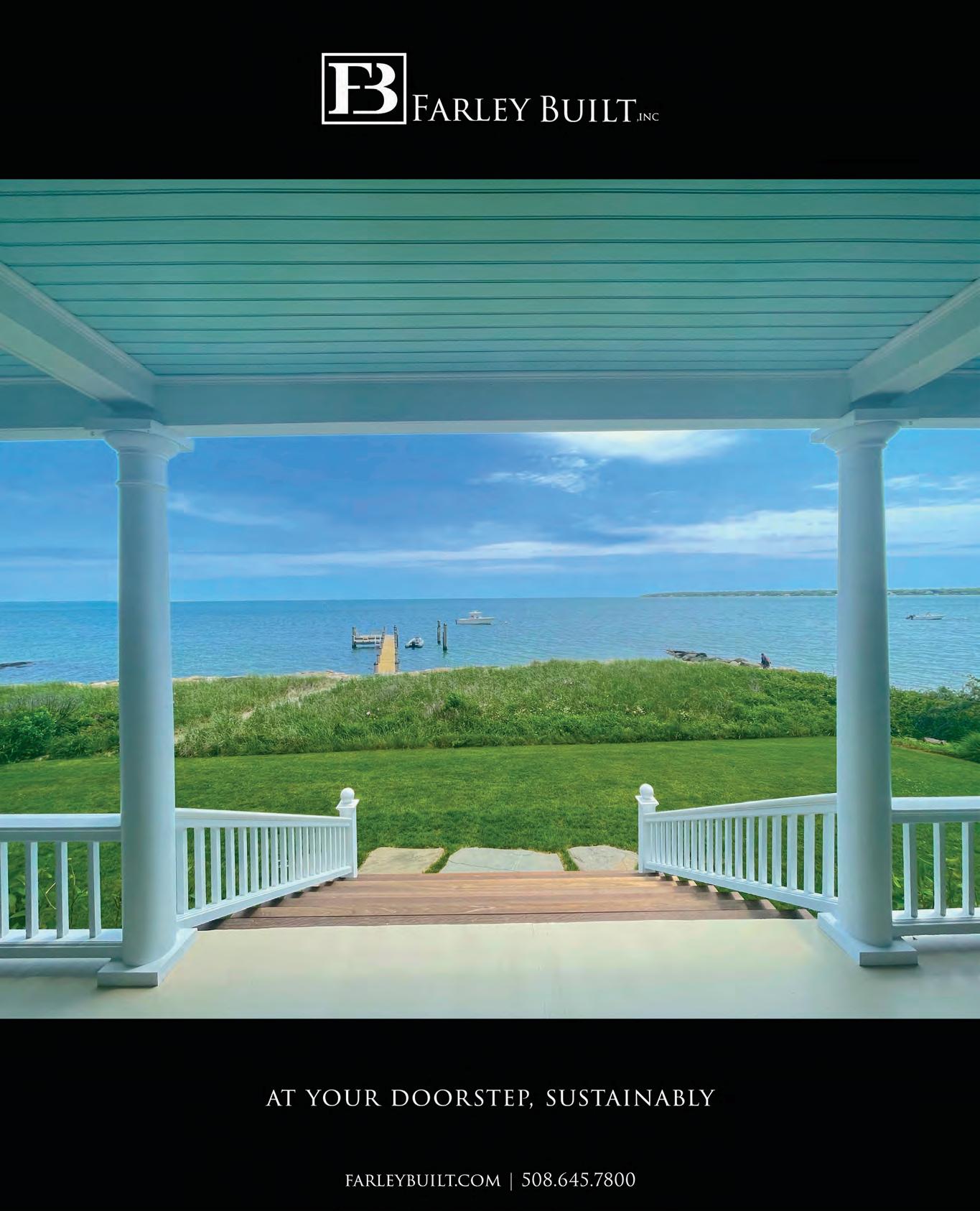


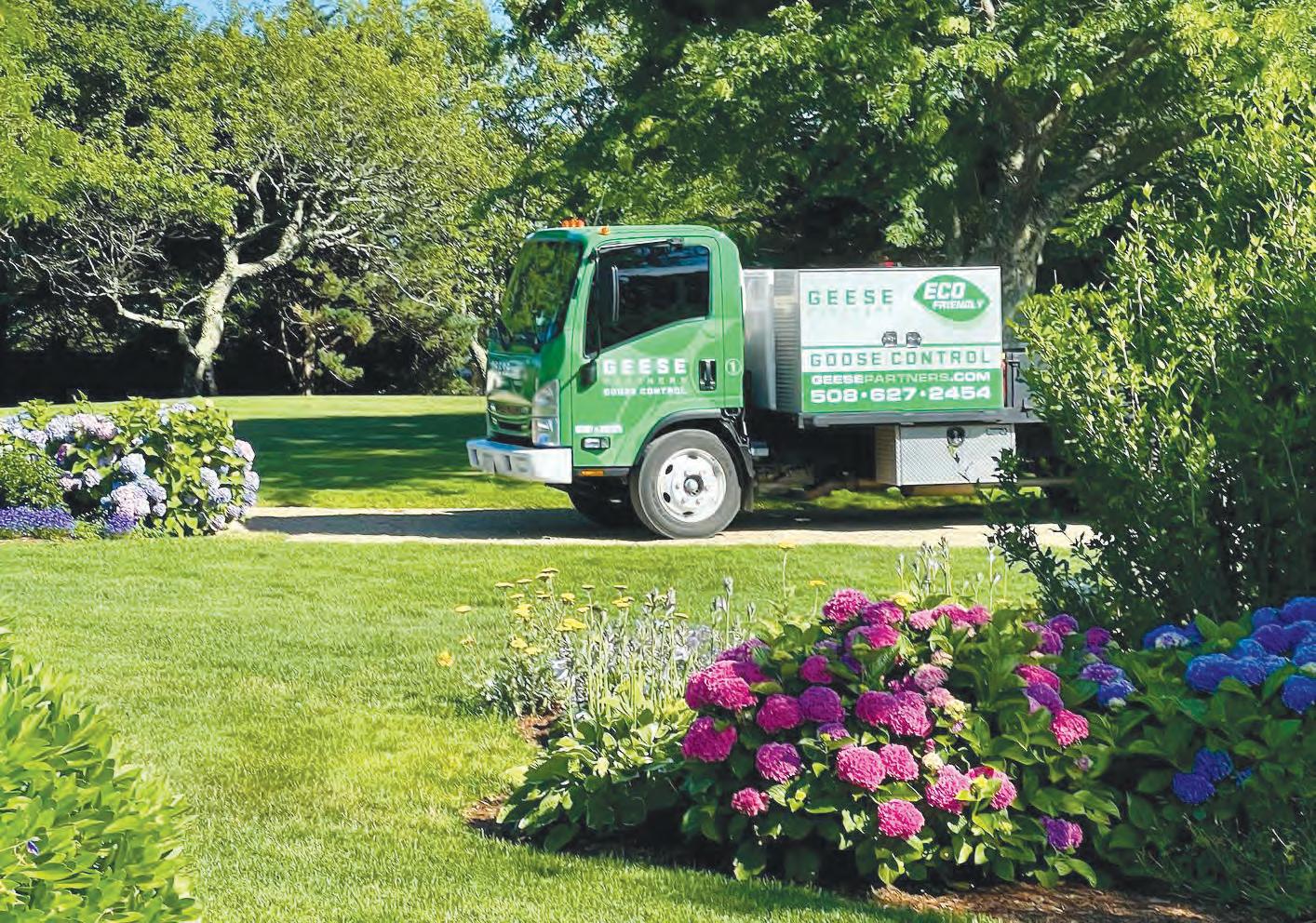

Take Back Your Turf Contact us today! (508) 627-2454 MV@GeesePartners.com GeesePartners.com Free Estimates Local & Year-Round Residential, Commercial & Event Goose Control Safe & Eco-Friendly Goose Control on Martha’s Vineyard Geese Partners of Martha’s Vineyard offers an eco-friendly, safe, and effective recurring goose repellent spray solution.
















































































 –Leslie Garrett
–Leslie Garrett












 Celebratorily, Dot
Celebratorily, Dot

























 Story by Mollie Doyle Photos by Jeremy Driesen
Story by Mollie Doyle Photos by Jeremy Driesen




















 Story by Mollie Doyle
Story by Mollie Doyle






































